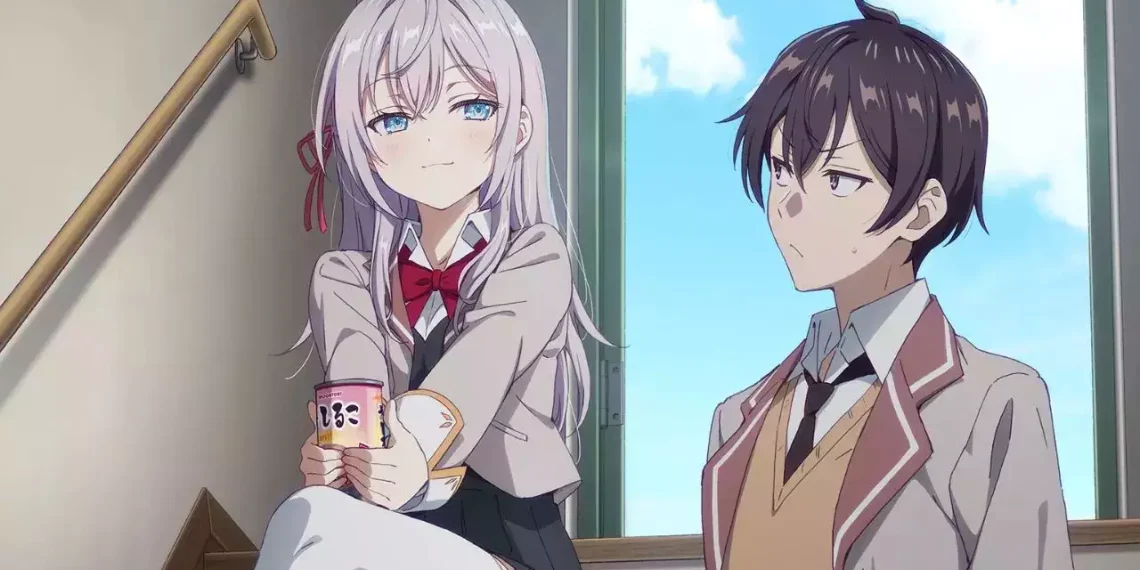Most romance anime conclude once the main characters confess their feelings and become a couple. The story builds up to this moment through a series of events, gradually bringing them closer. By the end, they share a heartfelt confession, marking the completion of their romantic journey.
However, many romance anime stop at this point, failing to examine what happens after the couple gets together. This can be disappointing for fans who want to see their favorite pair’s relationship unfold beyond the initial confession. Seeing their everyday interactions, challenges, and heartwarming moments can make the romance feel more real and fulfilling.
For those who want something different, some romance anime focus on relationships that develop early in the story. These shows allow viewers to experience the joys and struggles of a couple’s journey together, making their love story more engaging. Below, we have listed 10 romance anime where the characters start dating early on, giving fans a chance to watch their love grow over time.
31. Online Romance in Recovery of an MMO Junkie

Recovery of an MMO Junkie goes into the amusing yet awkward romance between two online gamers. The anime centers around Moriko Morioka, a woman who decides to leave her job and dedicate her days to playing video games, offering viewers a delightful peek into the realms of gaming and romance.
Moriko’s decision to portray herself as a male character in the online gaming world adds an extra layer of humor to the story.
The anime’s humor stems from relatable situations and the gradual development of a charmingly awkward romance.
With its stellar cast of characters and engaging dialogue, Recovery of an MMO Junkie presents a heartwarming and humorous exploration of online connections and the complexities of romance. Fans of all ages are sure to find enjoyment in this endearing series.
“Recovery of an MMO Junkie” (original title: “Net-juu no Susume”) is a Japanese web manga series by Rin Kokuyo that was later adapted into an anime by Signal.MD in 2017. This romantic comedy-drama explores themes of escapism, self-discovery, and the unexpected connections that can form through online gaming.
The story centers around Moriko Morioka, a 30-year-old woman who quits her job and immerses herself in MMORPGs, where she meets Yuuta Sakurai, another player whose real-life identity becomes intertwined with her own.
The story begins with Moriko Morioka, a 30-year-old woman who has recently resigned from her corporate job due to burnout and dissatisfaction with her life.
Seeking solace and escape, she dives into online gaming, creating a male character named “Hayashi” in the MMORPG “Fruits de Mer.” In this virtual world, she meets Lily, a kind and supportive player who helps her navigate the game and becomes her closest in-game friend.
Unbeknownst to Moriko, Lily is actually Yuuta Sakurai, a handsome and socially awkward young man who works at a trading company.
Yuuta himself is recovering from past traumas and finds comfort in his online persona. As Moriko and Yuuta continue to interact in the game, their real-life paths cross in unexpected ways, leading to a series of comedic and heartwarming encounters.
**Escapism and Recovery**: The series goes into the concept of escapism, portraying how Moriko uses the online game as a means to escape her stressful reality.
However, it also highlights the importance of recovery and finding a balance between the virtual and real worlds. Both Moriko and Yuuta use the game to cope with their personal struggles, and through their interactions, they begin to heal and rediscover themselves.
**Online Identities and Anonymity**: “Recovery of an MMO Junkie” explores the duality of online identities. Moriko and Yuuta present different personas in the game, which allows them to express parts of themselves they might hide in real life.

The series shows how the anonymity of online interactions can lead to genuine connections, as players often reveal their true selves behind the safety of their avatars.
**Romance and Connection**: At its core, the series is a romantic comedy that emphasizes the unexpected and serendipitous nature of love.
Moriko and Yuuta’s relationship develops through their online interactions, illustrating how deep emotional connections can form in virtual spaces. Their eventual real-life encounters add layers of complexity and authenticity to their romance.
**Social Anxiety and Personal Growth**: Both protagonists struggle with social anxiety and self-doubt. The series portrays their journeys toward overcoming these challenges, supported by their online and real-life friends. Moriko’s transformation from a reclusive gamer to someone willing to face the world again is particularly poignant.
**Moriko Morioka**: Moriko is a relatable and endearing protagonist. Her decision to quit her job and retreat into the gaming world is driven by her dissatisfaction with societal expectations and personal insecurities. Through her interactions in “Fruits de Mer,” she gradually rebuilds her confidence and redefines her sense of self.
**Yuuta Sakurai**: Yuuta is a gentle and kind-hearted character who also uses gaming as a refuge from his stressful job and past experiences.
His dual identity as Lily allows him to express his caring and nurturing side, which he initially struggles to show in real life. His journey mirrors Moriko’s, as he learns to balance his online and offline personas.
**Supporting Characters**: The series features a cast of supporting characters who add depth and humor to the story. Kazuomi Fujimoto, Yuuta’s co-worker and in-game friend, provides comic relief and insightful observations. Homare Koiwai, Moriko’s former colleague, plays a crucial role in bridging her online and real-life worlds.
The art style of “Recovery of an MMO Junkie” is clean and appealing, effectively capturing the contrast between the real world and the vibrant, fantastical game world.
The character designs are expressive, conveying the protagonists’ emotions and personalities. The animation by Signal.MD is smooth and enhances the comedic and dramatic moments of the series.
“Recovery of an MMO Junkie” has been praised for its relatable characters, engaging story, and the realistic portrayal of online gaming culture.
The series resonates with viewers who understand the allure of online worlds and the potential for meaningful connections within them. Its exploration of adult themes, such as career burnout and social anxiety, sets it apart from typical romantic comedies.
The anime adaptation received positive reviews for its faithful representation of the manga and its ability to balance humor with emotional depth. The voice acting, particularly Mamiko Noto as Moriko and Takahiro Sakurai as Yuuta, has been lauded for bringing the characters to life.
“Recovery of an MMO Junkie” offers a heartwarming and insightful look at love and self-discovery in the digital age. Rin Kokuyo’s storytelling, combined with Signal.MD’s animation, creates a series that is both entertaining and thought-provoking.
The journey of Moriko and Yuuta highlights the potential for personal growth and genuine connections in online spaces, reminding us that sometimes, the virtual world can lead to real-life happiness.
Whether you are a gamer or simply someone who enjoys a good romantic comedy, “Recovery of an MMO Junkie” provides a refreshing and contemporary take on romance, identity, and the healing power of human connections.
30. Horimiya
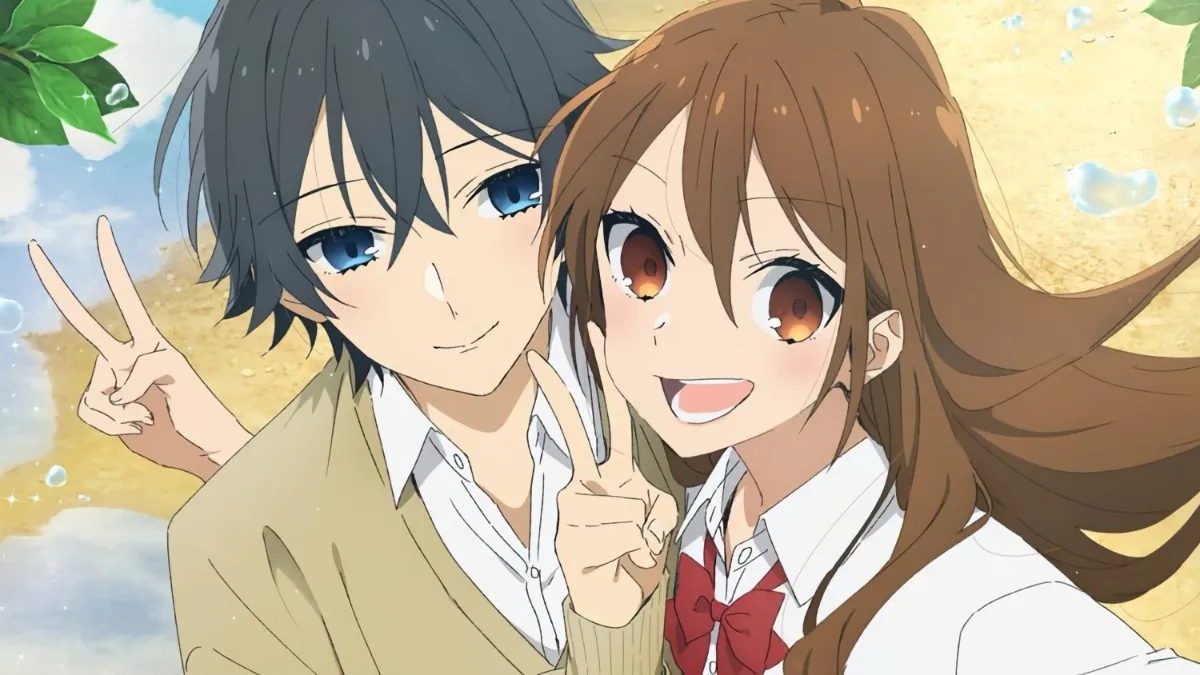
“Horimiya” revolves around the unlikely friendship between Kyoko Hori and Izumi Miyamura, who are polar opposites in school. While Kyoko is popular and outgoing, Izumi is reserved and misunderstood due to his appearance. Despite their contrasting personalities, they discover unexpected similarities and develop a deep connection.
Similar to “My Dress-Up Darling,” “Horimiya” explores the theme of opposites attracting and reveals the hidden depths of its characters.

As Kyoko and Izumi’s relationship evolves from friendship to romance, viewers are drawn into their heartfelt journey of self-discovery and acceptance.
With its compelling characters and genuine romance, “Horimiya” captures the essence of finding love in unexpected places and resonates with audiences seeking a heartwarming story of connection and growth.
29. Gamers!

Gamers! stands out as a classic romantic comedy anime with a unique focus on gaming. Despite being underrated, it offers a delightful story revolving around Keita Amano and Karen Tendou.
Their awkward yet charming relationship, along with the involvement of the supporting cast in an accidental love triangle, makes Gamers! an irresistibly chaotic and humorous series.
The fantastic ensemble cast adeptly handles the vibrant emotions and dynamic interactions of the teenage characters. With plenty of misunderstandings and romantic twists, viewers are bound to find themselves laughing uncontrollably. Moreover, the gaming-centric theme of Gamers! adds an extra layer of appeal, making it a must-watch for fans of video games.
28. The Saint’s Magic Power Is Omnipotent
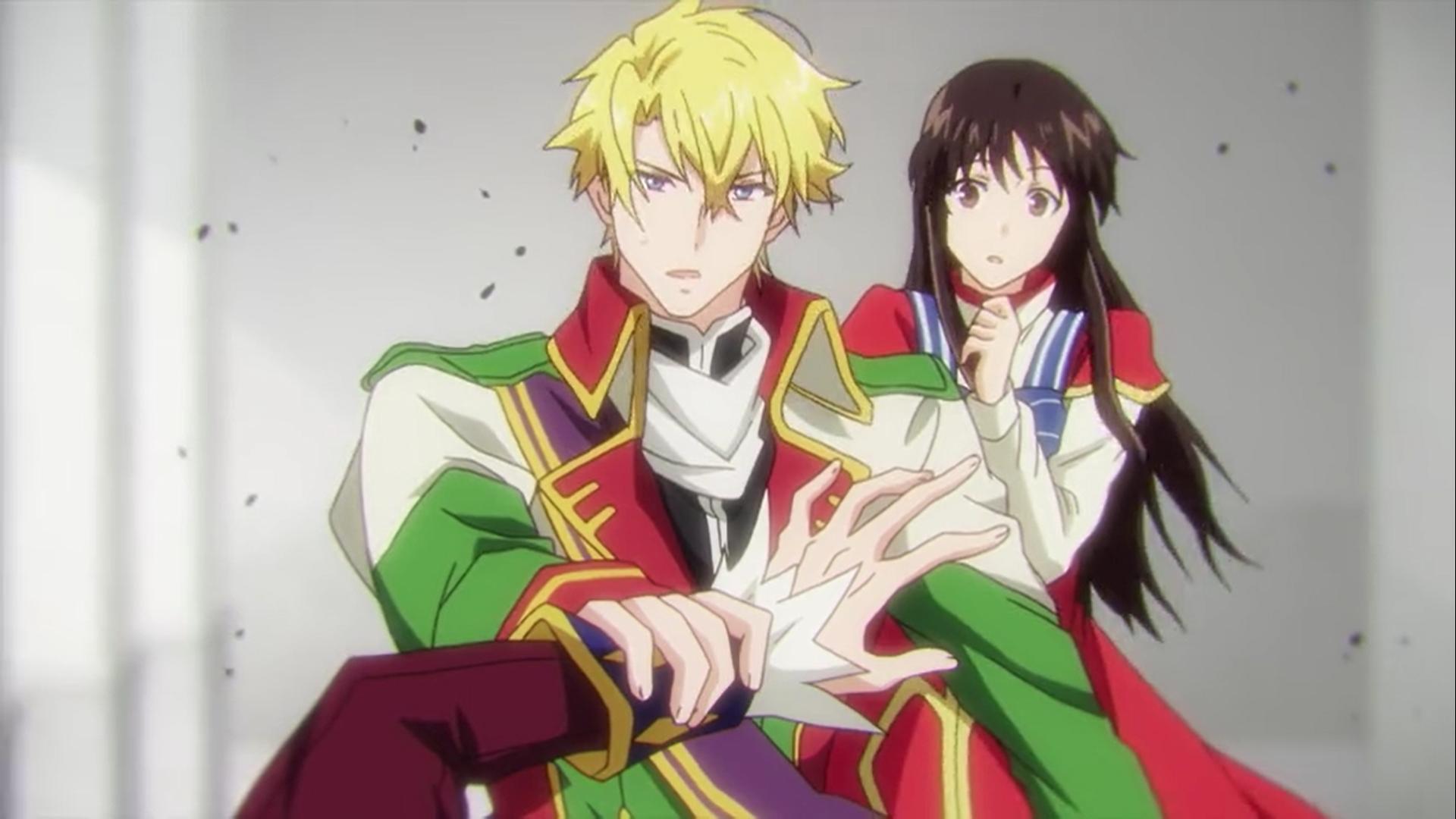
Within the narrative of “The Saint’s Magic Power Is Omnipotent,” Sir Albert Hawke stands as a distinguished knight and a leader, earning the moniker of the Ice Knight not just for his prowess in ice magic but also for his notably stoic demeanor.
His reserved nature is such that any display of emotion on his part is seen as nothing short of astonishing by his peers.
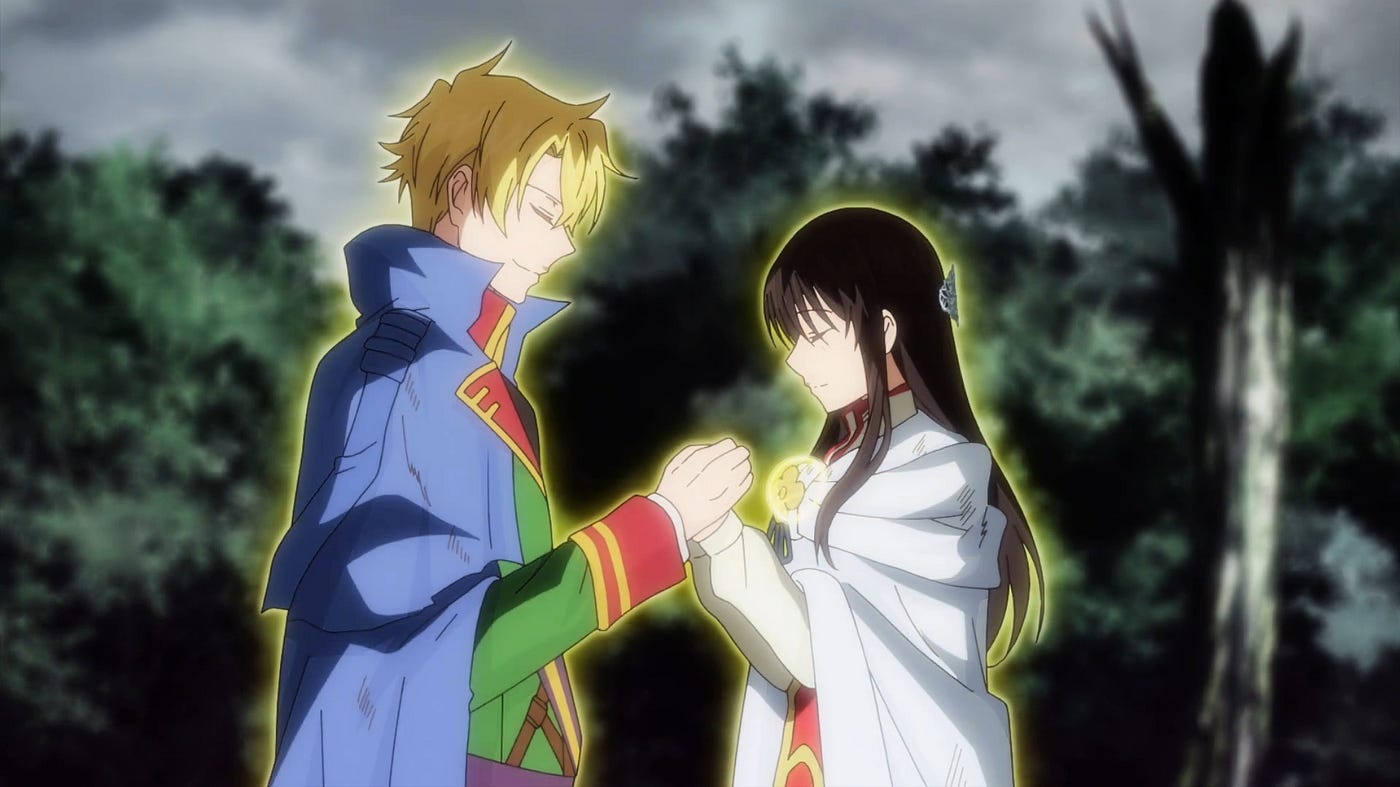
Characterized by a cool and distant exterior that belies a deep warmth hidden from the world, a kuudere like Hawke is challenging to get close to.
Yet, Sei, with her kindness, intelligence, and exceptional potion-making skills, manages to draw out a softer side of Albert Hawke, demonstrating his respect and affection towards her. This dynamic showcases how he gradually opens up, hinting at the depth of character beneath his icy facade.
27. Spy x Family
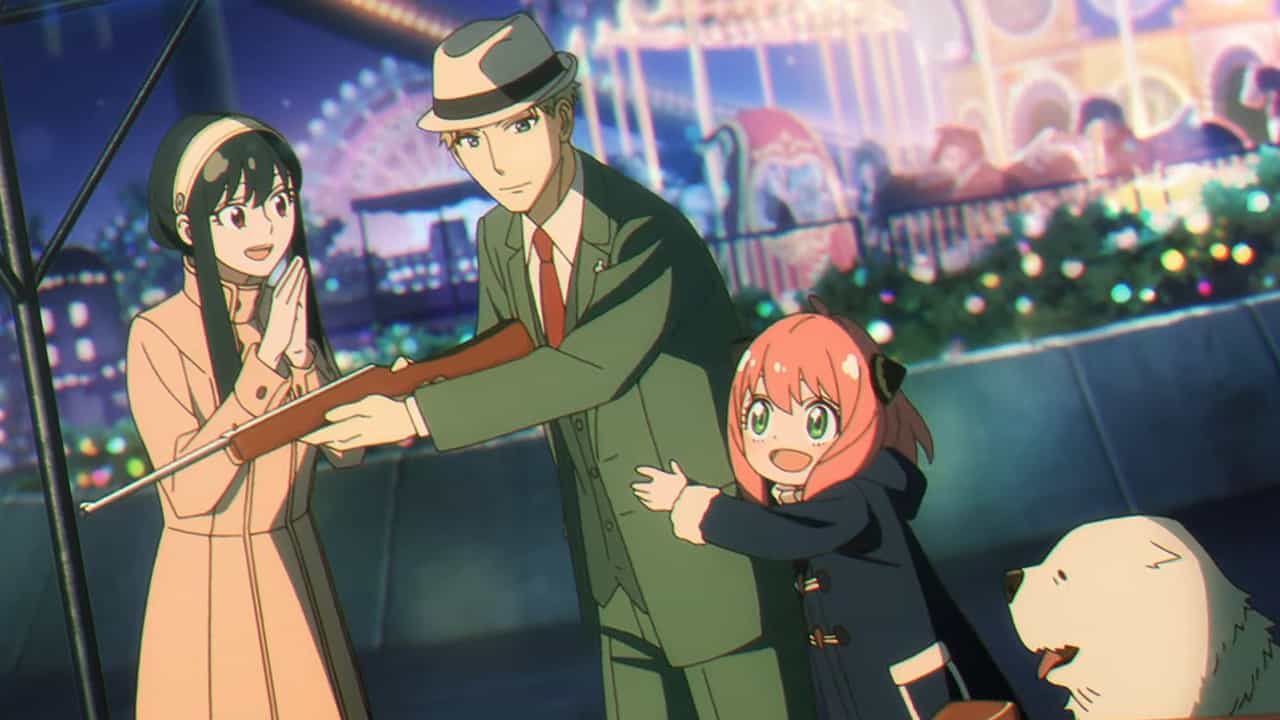
In “Spy x Family,” Loid Forger and Yor Briar find a unique set of circumstances that brings them together. Loid, needing a wife to complete the illusion of a stable family for his daughter Anya’s admission to a prestigious school, and Yor, seeking to dispel suspicions about her single status, find themselves in a mutually beneficial arrangement.
Anya’s suggestion to formalize their relationship through marriage finds an unexpectedly willing participant in Loid, despite his internal assertions of detachment.
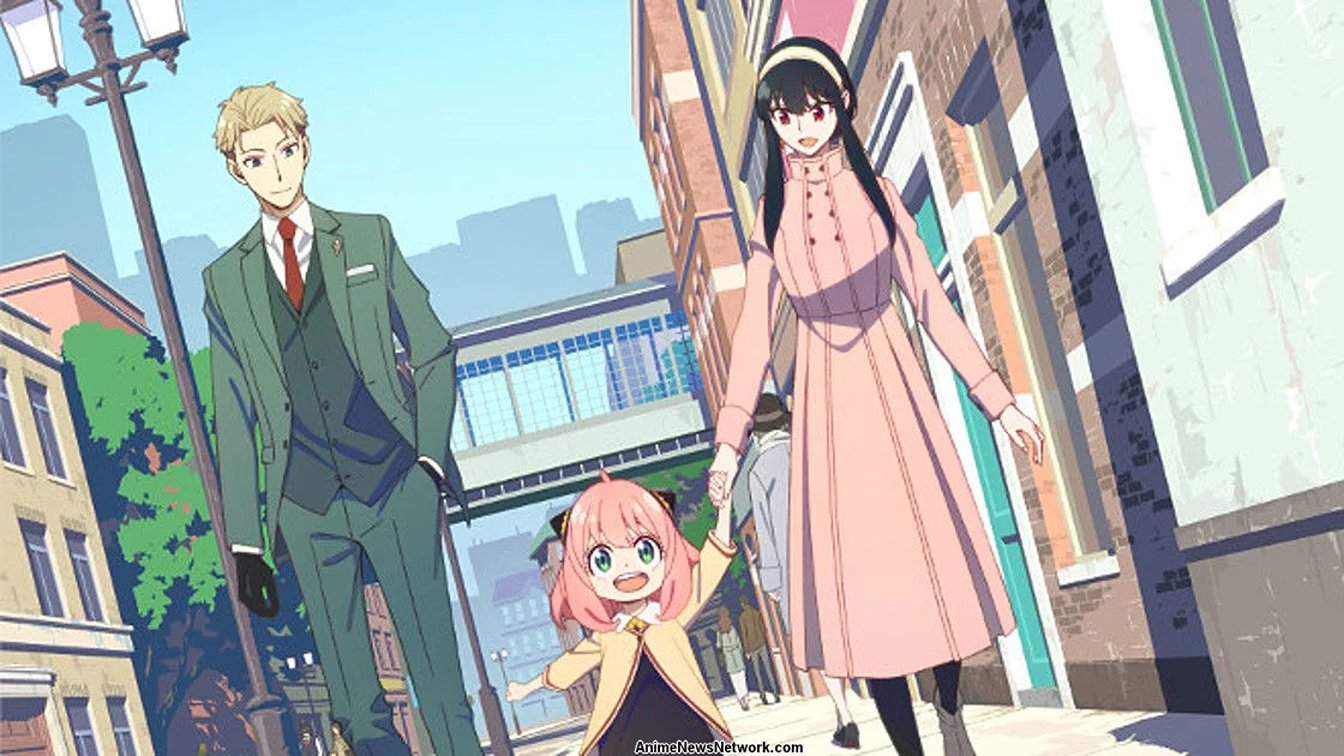
As they begin their cohabitation and joint upbringing Anya, Loid, and Yor maintain a courteous yet distant rapport.
However, their shared living space gradually breaks down the barriers between them, revealing an undeniable mutual attraction and growing fondness that seems to elude only their own awareness.
26. Full Metal Panic? Fumoffu

“Full Metal Panic!” stands as an iconic mecha anime from the 2000s, grabbing audiences with its gripping action sequences and the dynamic relationship between Sousuke and Chidori.
While the main series delivers heart-stopping battles, the spin-off, “Full Metal Panic? Fumoffu,” offers a refreshing twist by the lighter side of Sousuke and Chidori’s adventures.
Set in a romantic comedy framework, Fumoffu injects chaos and humor into the intense narrative, providing viewers with a delightful new perspective on the beloved lead duo of Full Metal Panic.
25. School Rumble

School Rumble is a classic anime known for its hilarious take on a complicated love triangle. The story revolves around Tenma Tsukamoto, who develops feelings for Ooji Karasuma after a misunderstanding involving Kenji Harima.
Meanwhile, Harima secretly harbors feelings for Tenma, leading to chaotic and comedic situations.
Despite being an older anime, School Rumble remains a laugh-out-loud comedy throughout. Viewers are treated to hilarious antics as the characters attempt to find their romantic entanglements.
While the ending may not satisfy everyone, the sheer humor and entertainment value of the show make it a must-watch for anime fans.
24. My Love Story!!
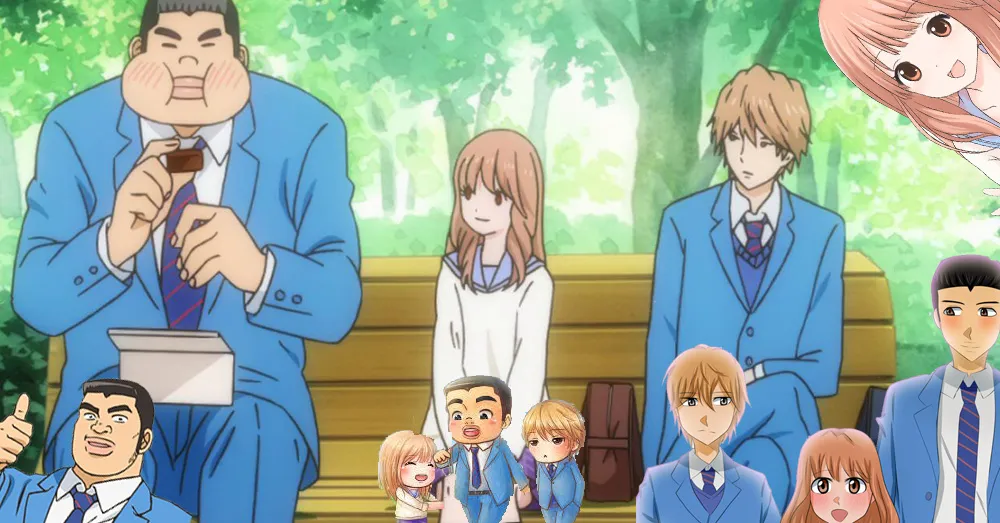
My Love Story!! is a heartwarming anime that follows the charming romance between Takeo Gouda and Rinko Yamato. Despite his intimidating appearance, Takeo is a kind-hearted individual who falls in love easily but struggles to find reciprocation. However, everything changes when he meets the sweet and caring Rinko.
Their relationship is portrayed with utmost wholesomeness, as they support each other through thick and thin, showcasing genuine love and affection.
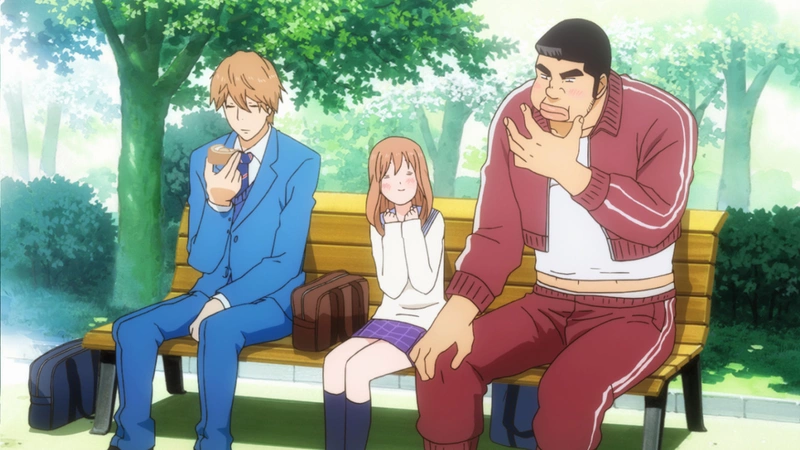
Moreover, the absurdity of Takeo’s strength and talents adds a delightful touch of humor to the series. Despite his imposing presence, Takeo’s earnest efforts to help others often lead to comedic situations.
Rinko, on the other hand, is depicted as one of the sweetest characters in anime, complementing Takeo’s personality perfectly. My Love Story!! is a delightful treat for viewers, offering a perfect blend of heartwarming romance and laugh-out-loud humor that is sure to grab audiences of all ages.
23. Tsuredure Children

“Tsuredure Children” offers a delightful romantic escapade of numerous high school couples in a quasi-anthology format. From established relationships to budding romances, the series explores the trials and tribulations of young love with a hefty dose of humor.
Despite the limited screen time for each couple, their interactions leave a lasting impression, leaving viewers in stitches.
One of the show’s greatest strengths lies in its relatability. Whether viewers experienced high school romance firsthand or not, the challenges and awkwardness depicted in “Tsuredure Children” strike a chord with many.
The universal themes of love and adolescence resonate deeply, making the anime both hilarious and heartwarming.
“Tsuredure Children” is a charming blend of comedy and romance that captures the essence of teenage relationships. With its endearing characters and laugh-out-loud moments, it’s no wonder audiences will find themselves eagerly awaiting each new episode.
22. Ouran High School Host Club
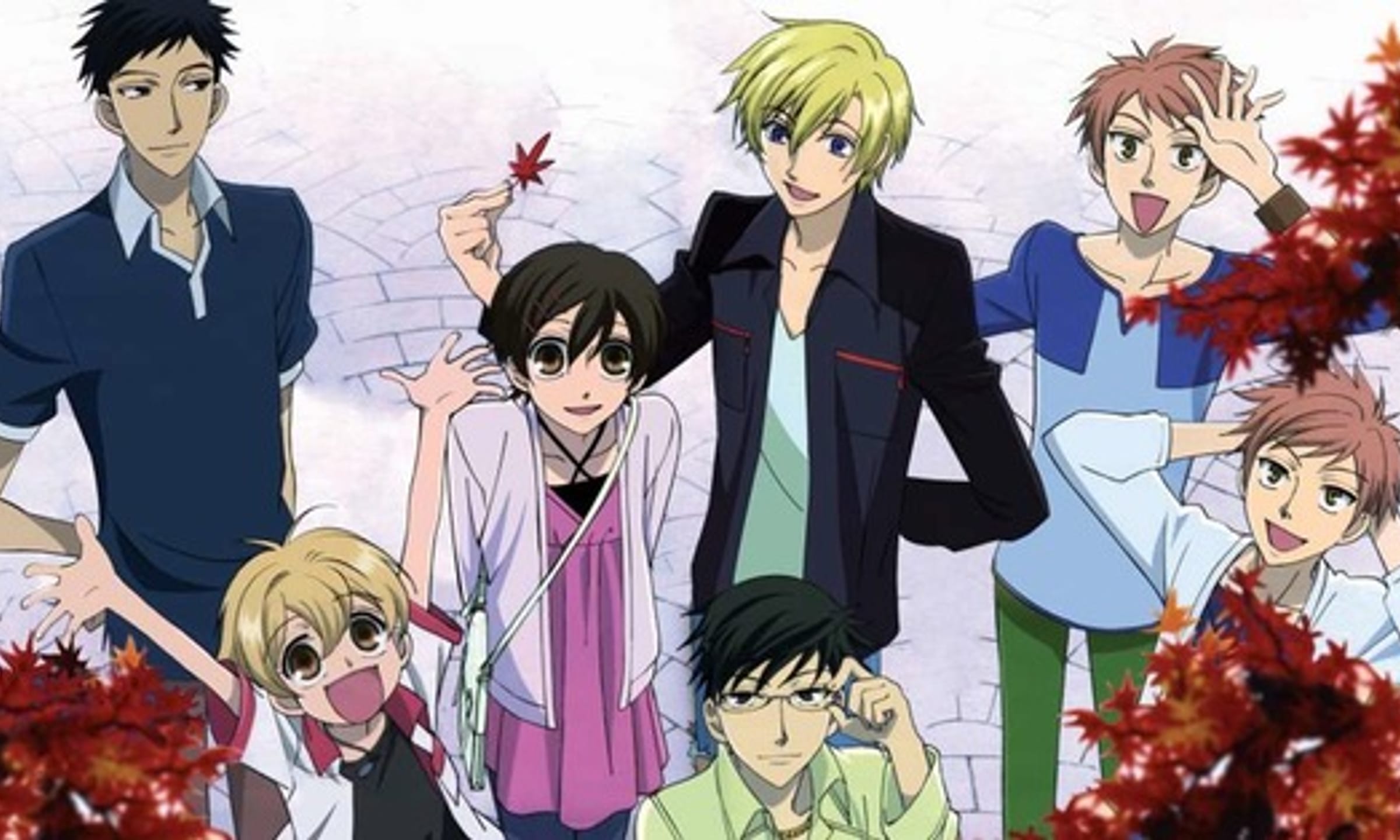
“Ouran High School Host Club” is a famous anime show loved by many for its funny and romantic story. It’s about a group called the Ouran Host Club who invite a girl named Haruhi Fujioka to join them. As Haruhi spends time with the club, she becomes friends with the boys, and they start to like her.
Even though it might sound like a typical love story, “Ouran High School Host Club” is more than that. It’s full of jokes and clever twists that make it different from other romance shows.
From funny parodies to touching moments, the anime has something for everyone to enjoy.
With its lovable characters, interesting plot, and good humor, “Ouran High School Host Club” is a show that people of all ages can enjoy. If you want to laugh and feel good, this anime is perfect for you.
21. Family Dynamics in “My Happy Marriage”
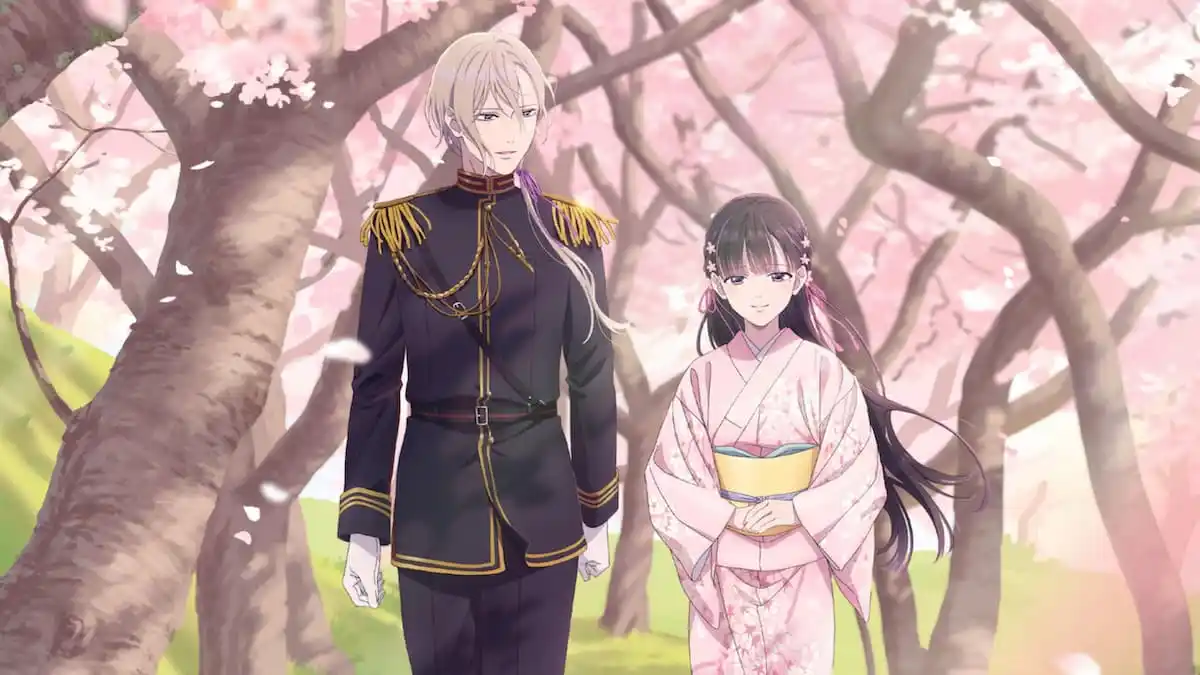
In “My Happy Marriage,” Miyo Saimori finds herself marginalized within her own family due to her lack of psychic powers and her status as a child from her father’s previous marriage. Treated as a scapegoat and burden, she anticipates similar mistreatment when she is betrothed to a wealthy suitor with a dubious reputation.
Despite initial apprehensions, Miyo’s fiancé, Kiyoka Kudo, surprises her with his kindness and understanding. As their relationship blossoms, Kudo becomes Miyo’s unwavering protector, swiftly coming to her aid whenever she faces adversity. His protective instincts extend to those who dare to harm her, showcasing his commitment and devotion.
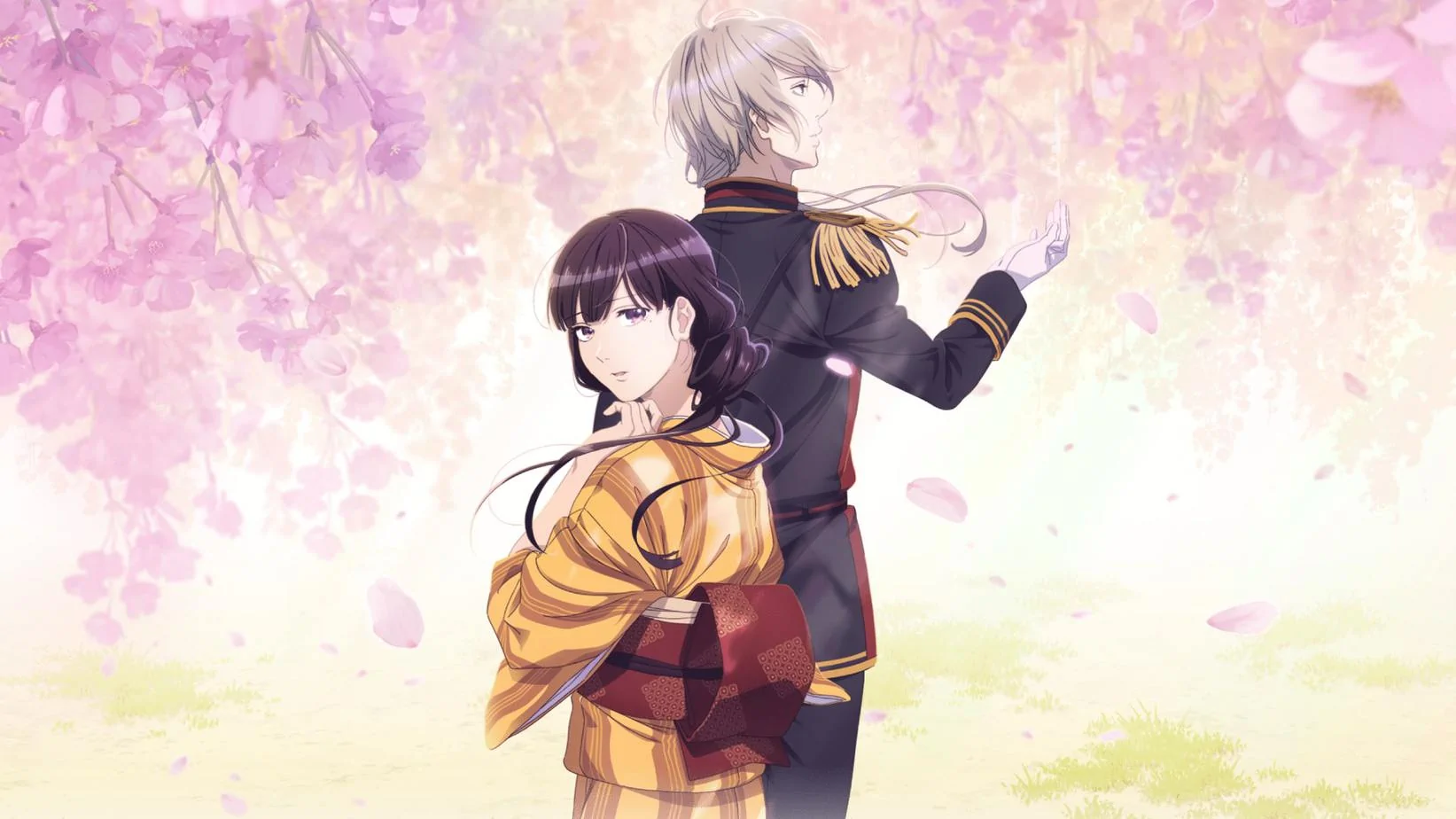
As Miyo and Kudo find the complexities of their engagement, the contrast between Miyo’s past mistreatment and Kudo’s steadfast support underscores the themes of familial expectations and personal resilience.
Their evolving relationship promises both heartwarming moments and compelling challenges as they strive for happiness amidst familial pressures.
20. The Tale of The Ice Guy and His Cool Female Colleague
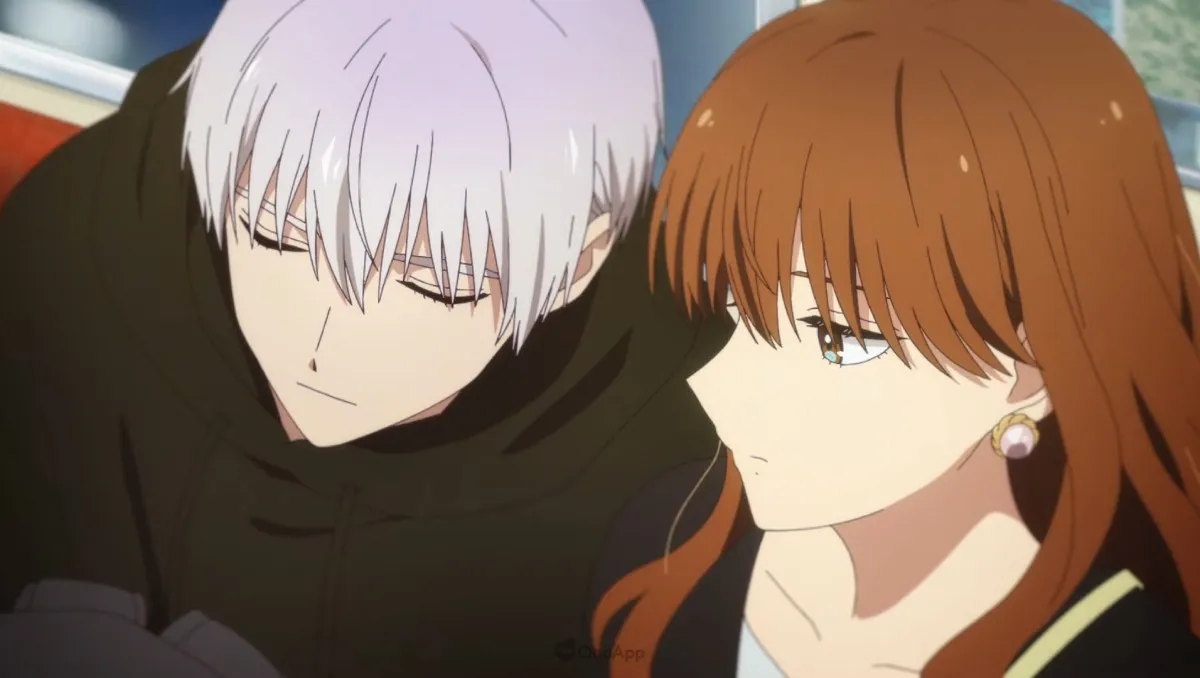
In “The Ice Guy and His Cool Female Colleague,” Himuro and Fuyutsuki share an office space, but their dynamic is anything but ordinary. Himuro, with his lineage tracing back to a yuki-onna, possesses the ability to summon snow and cause blizzards when his emotions run high.
Meanwhile, Fuyutsuki embraces Himuro’s uniqueness without judgment, offering her support and understanding.
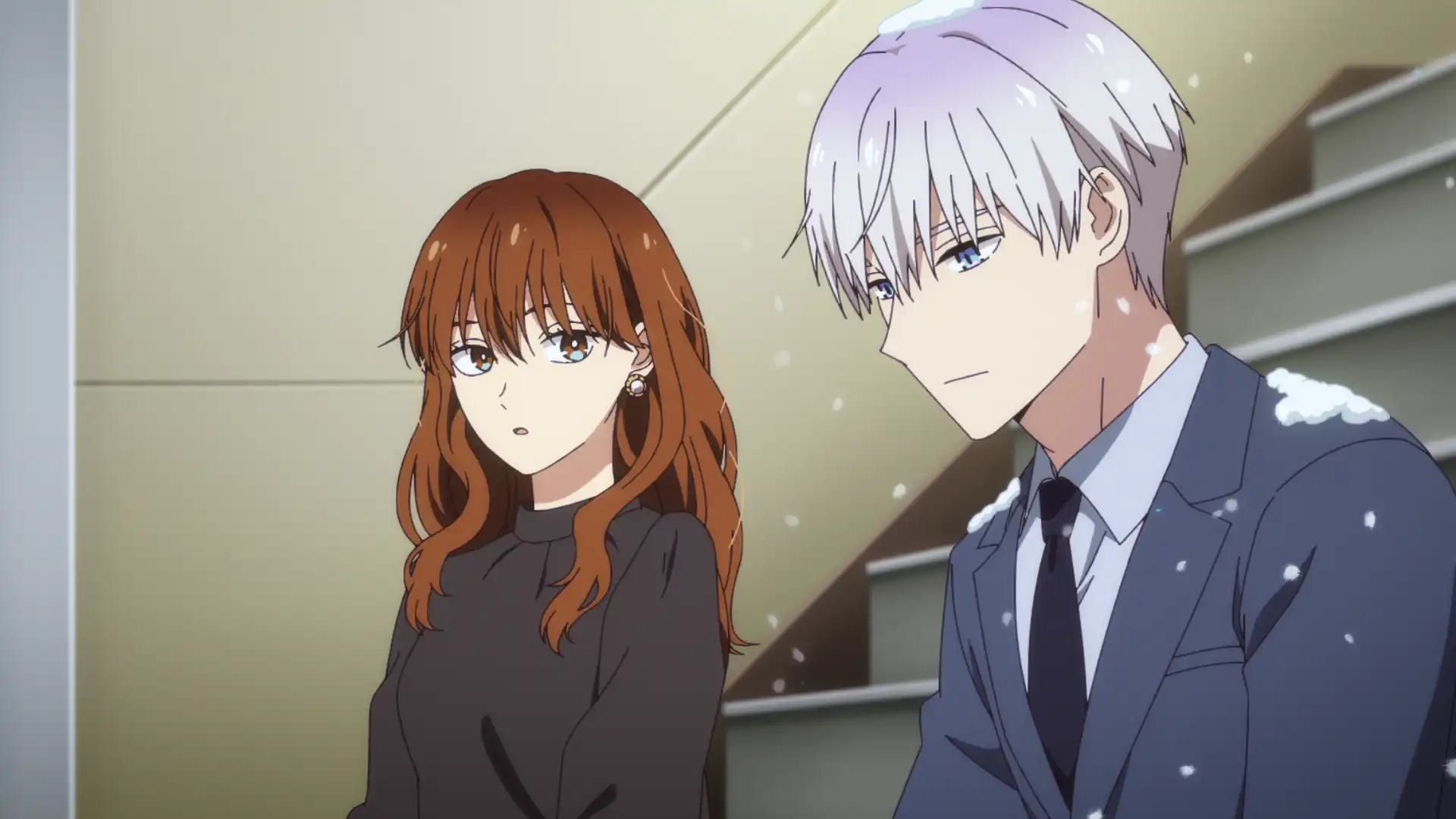
As two introverts guide the workplace, their bond deepens as they discover love blossoming between them. Unlike other rom-coms, this series takes a slower pace, focusing on the heartwarming connection between its characters rather than relying on rapid-fire humor.
The result is a delightful blend of wholesomeness and humor, making it a charming and refreshing addition to the genre.
19. The Apothecary Diaries
In “My Apothecary Diaries,” Jinshi and Maomao inhabit two different worlds, both in terms of their backgrounds and their personalities. Jinshi, born into privilege and surrounded by wealth and political intrigue, stands in stark contrast to Maomao, a palace servant whose exceptional talents stem from her upbringing by a humble apothecary father.
Their differences extend beyond their origins to their very personalities. Jinshi, renowned for his beauty, is unafraid to leverage his charm, while Maomao, conscious of the dangers around her, purposefully downplays her own attractiveness.
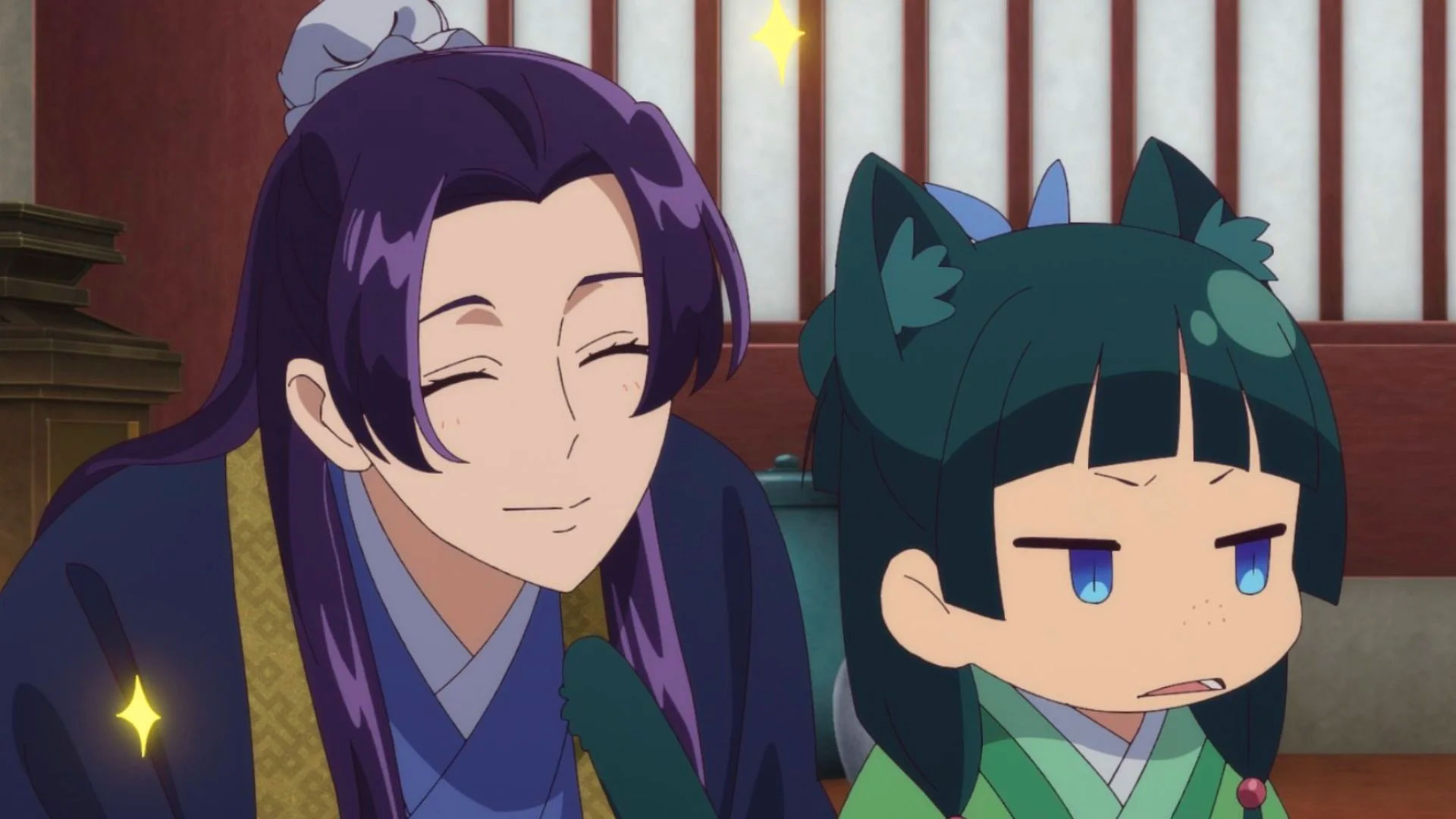
When Jinshi attempts to flirt with her, Maomao’s reactions range from flustered to suspicious, questioning the sincerity behind his advances. While Jinshi is emotive and romantic, Maomao remains reserved and self-contained, often lost in her own thoughts.
Despite these disparities, the potential for romance between them is undeniable. Their contrasting natures not only create tension but also promise depth and complexity to their relationship, making their journey one to watch.
18. I’m the Villainess, So I’m Taming the Final Boss
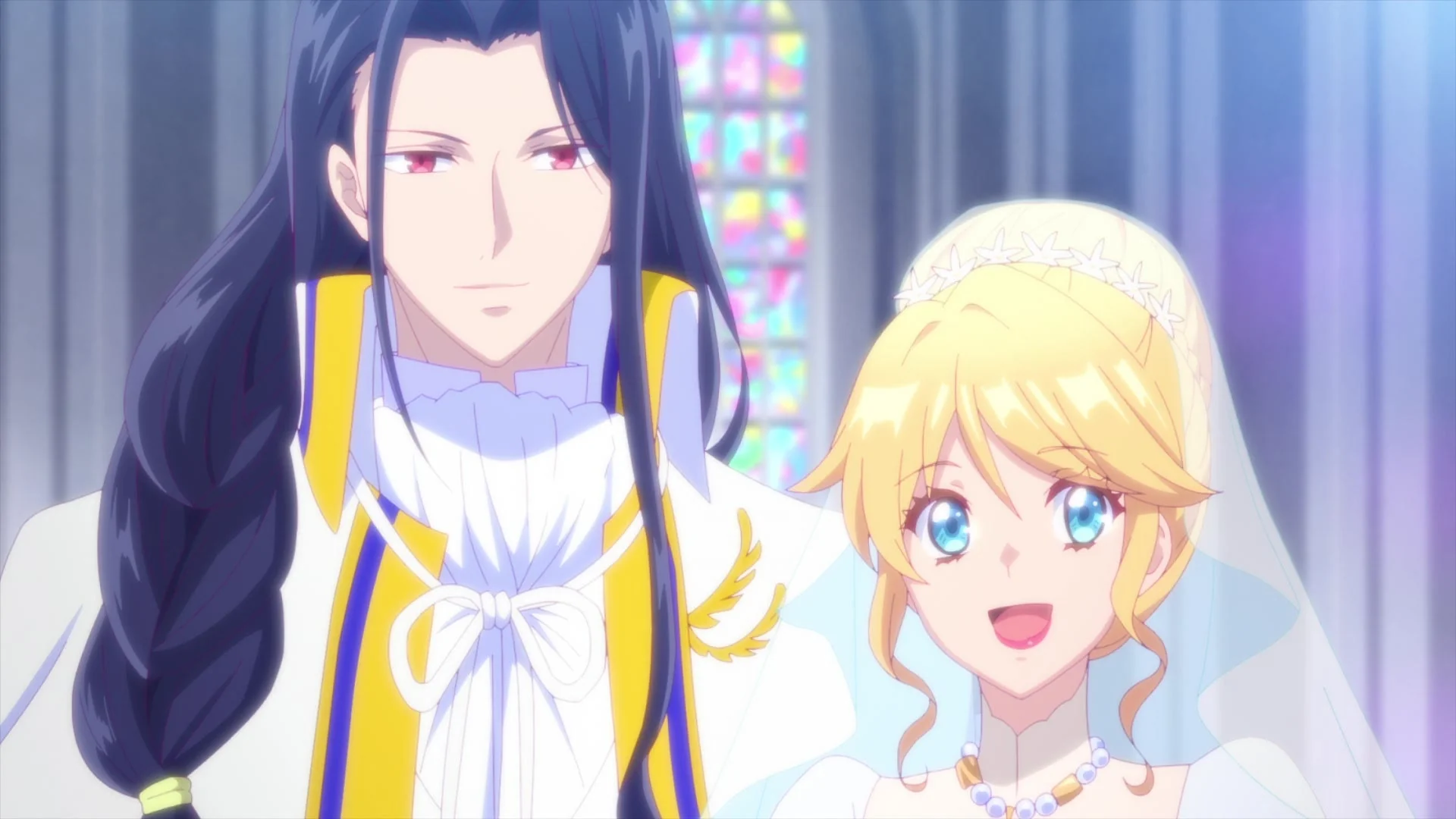
“I’m the Villainess, So I’m Taming the Final Boss” falls within the popular shojo isekai subgenre, offering a fresh take on the classic villainess romance trope.
While villain-hero dynamics have long been a staple in anime, particularly in shojo narratives, male villains typically dominate such narratives, as seen in characters like Zagato from “Magic Knight Rayearth” and Vegeta from “Dragon Ball Z.”
In this story, Aileen undergoes a transformative journey after being reincarnated into her favorite otome game as the ill-fated minor villainess.
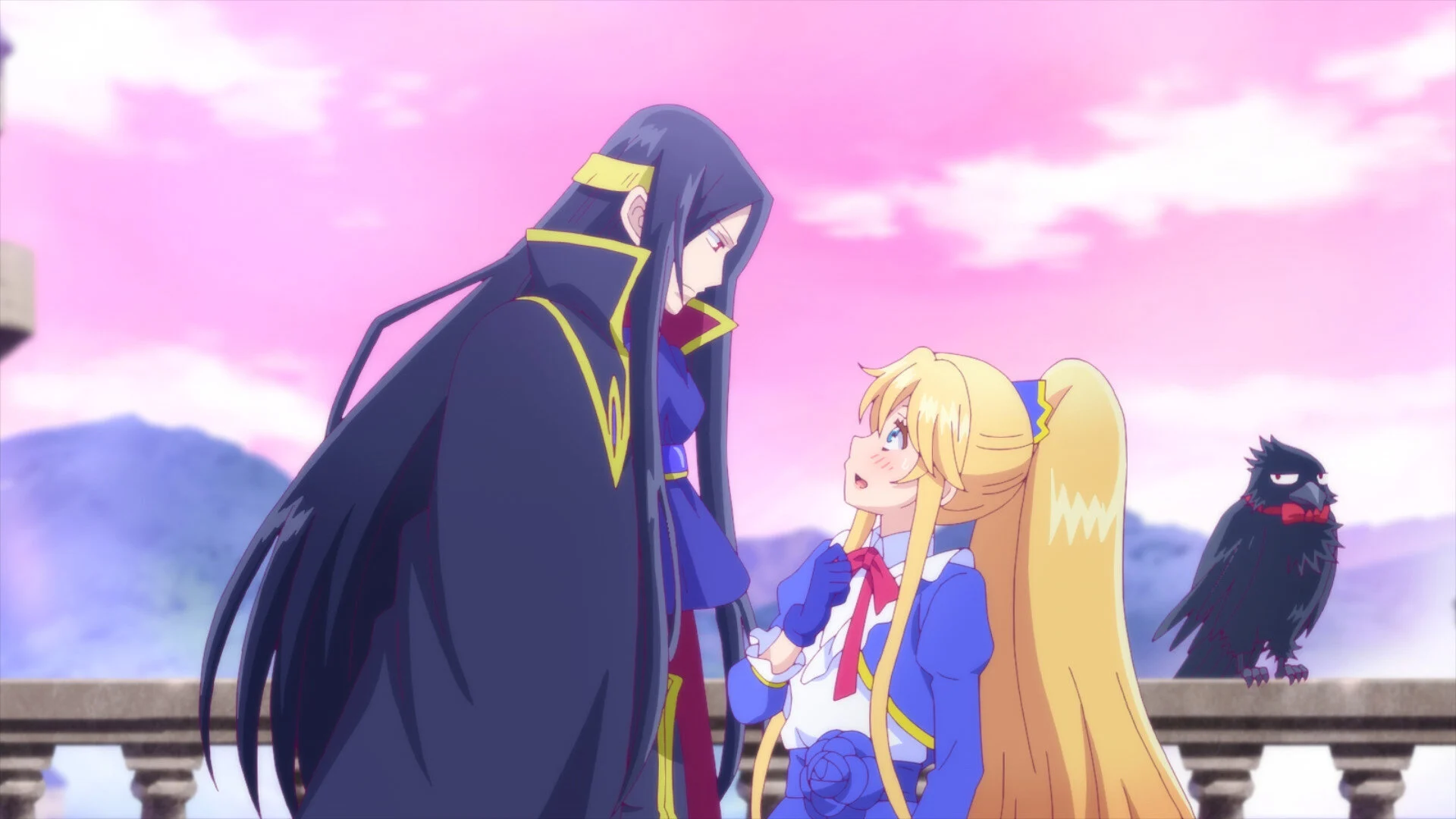
Although her personality may differ from the original game version, Aileen proves herself to be cunning and adept at scheming when necessary. Embracing her role as the villain, she utilizes her skills for the greater good, earning admiration from those around her.
Claude, another character with a heart of gold despite his villainous role in the game, quickly sees through Aileen’s façade and becomes gazed at by her. Their dynamic promises a compelling exploration of love and redemption within the context of a villainess romance, adding depth and intrigue to the narrative.
17. A Sign of Affection
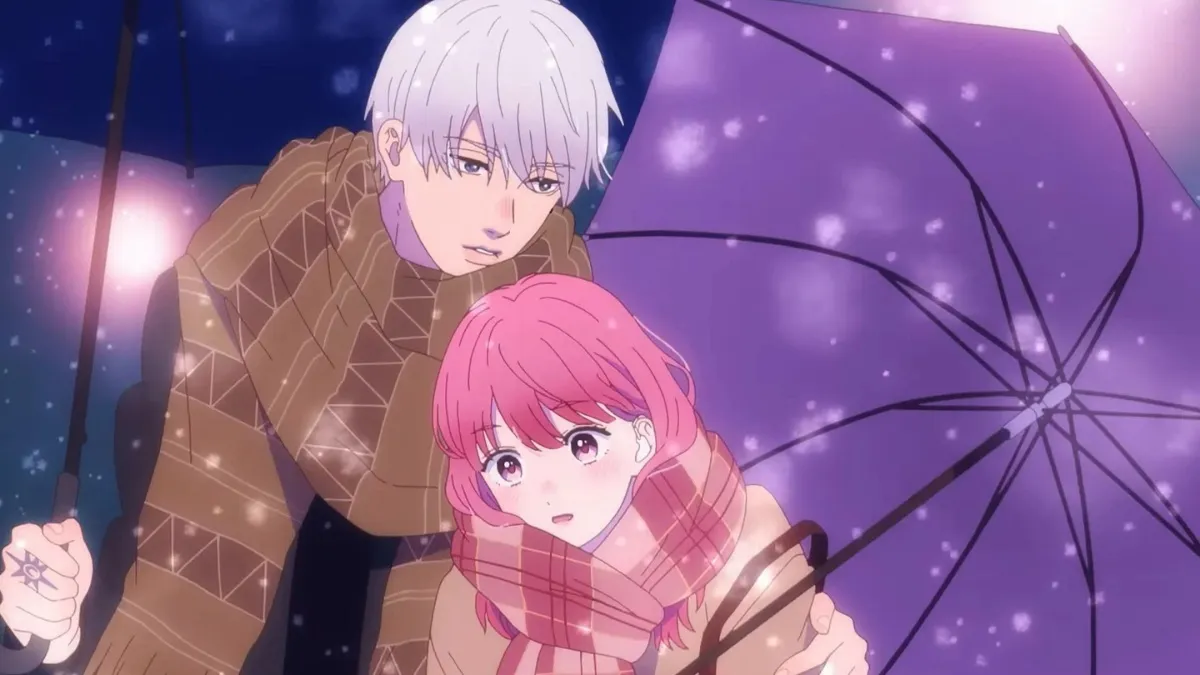
In “A Sign of Affection,” Yuki, a reserved college student, crosses paths with Itsuomi, a charming and multilingual traveler. Their connection grows as Itsuomi learns sign language to communicate directly with Yuki, showcasing his genuine interest and kindness. Despite Yuki’s initial shyness, their budding relationship appears mutually beneficial.
Their heartfelt courtship is not without its challenges, however, as Yuki’s childhood friend Oshi casts doubt on their romance. Oshi’s protective nature towards Yuki borders on overbearing, fueled by his hidden feelings for her.

The ensuing love triangle adds complexity to the narrative, reflecting the timeless theme of romantic conflict and jealousy.
While Yuki and Itsuomi find their budding romance, Oshi’s doubts and underlying emotions introduce tension and uncertainty. As the story unfolds, the realistic motivations behind the love triangle hint at an inevitable resolution, promising engaging developments for readers invested in the characters’ relationships.
16. Skip and Loafer
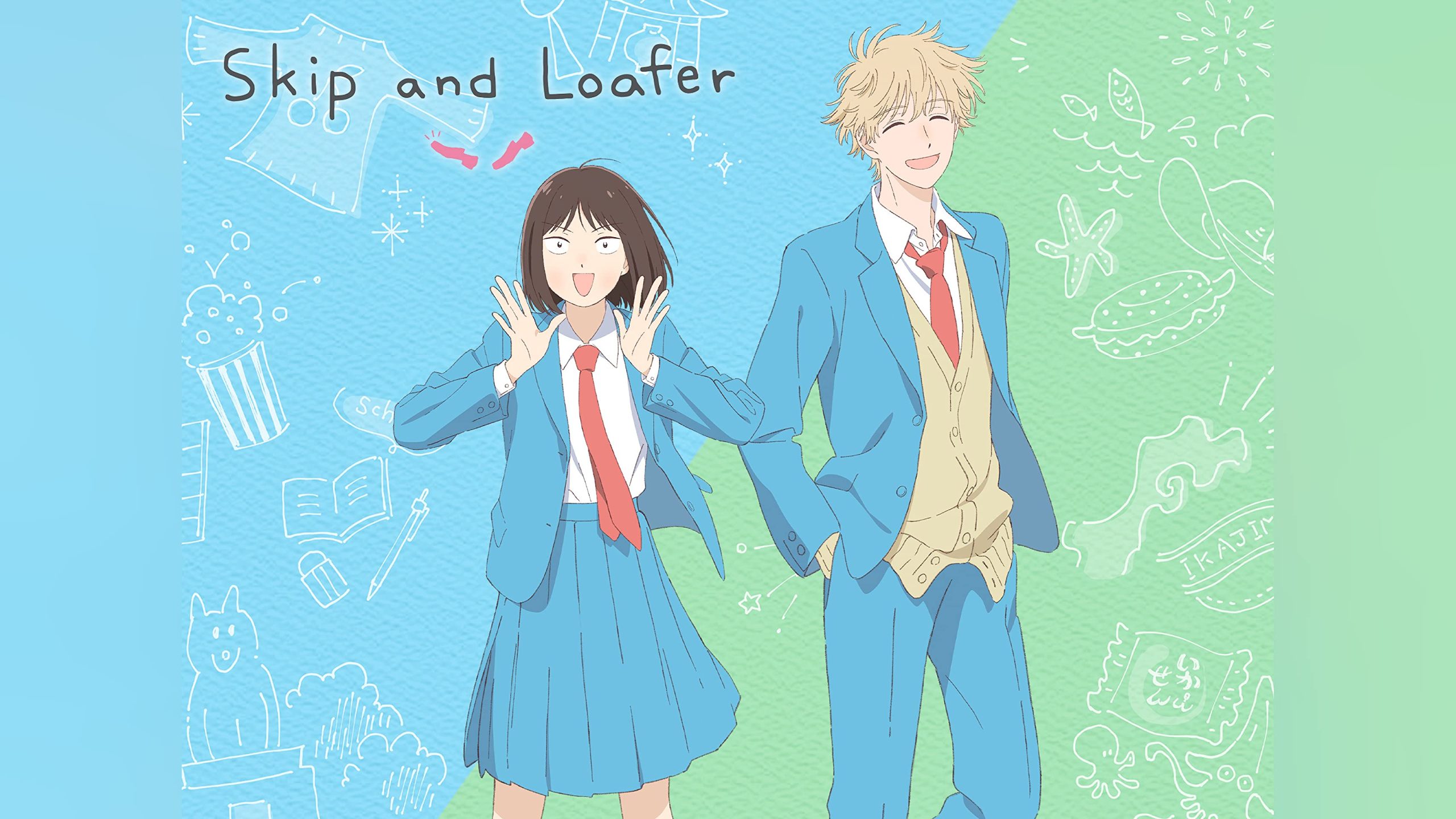
In “Skip and Loafer,” Misaki Iwakura embarks on a new chapter of her life as she leaves her rural roots behind for the bustling city of Tokyo. Determined to pursue her dreams of becoming a public official, Misaki’s optimism is quickly met with the overwhelming reality of urban life.
Guiding the complexities of high school in Tokyo proves to be a daunting task for Misaki, but she finds unexpected support in her classmate, Sousuke Shima.
As their friendship blossoms, Misaki discovers a newfound determination to adapt to her new environment, despite the comedic misadventures along the way.
With its endearing characters and relatable struggles, “Skip and Loafer” offers a heartwarming portrayal of friendship, love, and the challenges of adolescence in the big city. It’s a delightful romantic comedy that promises laughter and warmth for viewers of all ages.
“Skip and Loafer” (original title: “Sukipara”) is a slice-of-life manga series written and illustrated by Misaki Takamatsu. It began serialization in Monthly Afternoon in August 2018 and quickly garnered attention for its charming characters, relatable themes, and thoughtful storytelling.
The series follows the journey of Mitsumi Iwakura, a small-town girl who moves to Tokyo for high school, and her encounters with a diverse group of friends as she navigates the complexities of adolescence and urban life.
Mitsumi Iwakura is an ambitious and optimistic girl from a rural village who dreams of making a difference in the world. She enrolls in a prestigious high school in Tokyo with the goal of eventually entering politics.
However, the transition from her quiet hometown to the bustling city is more challenging than she anticipated. On her first day, she meets Shima Sousuke, a laid-back and kind-hearted boy who helps her when she gets lost.
The story unfolds as Mitsumi adjusts to her new environment, forming friendships and facing the ups and downs of high school life.
Each chapter explores different aspects of her journey, from academic pressures and social dynamics to personal growth and self-discovery. The series balances lighthearted humor with poignant moments, creating a narrative that resonates with readers of all ages.
**Self-Discovery and Personal Growth**: “Skip and Loafer” goes into the theme of self-discovery as Mitsumi navigates her new life in Tokyo.
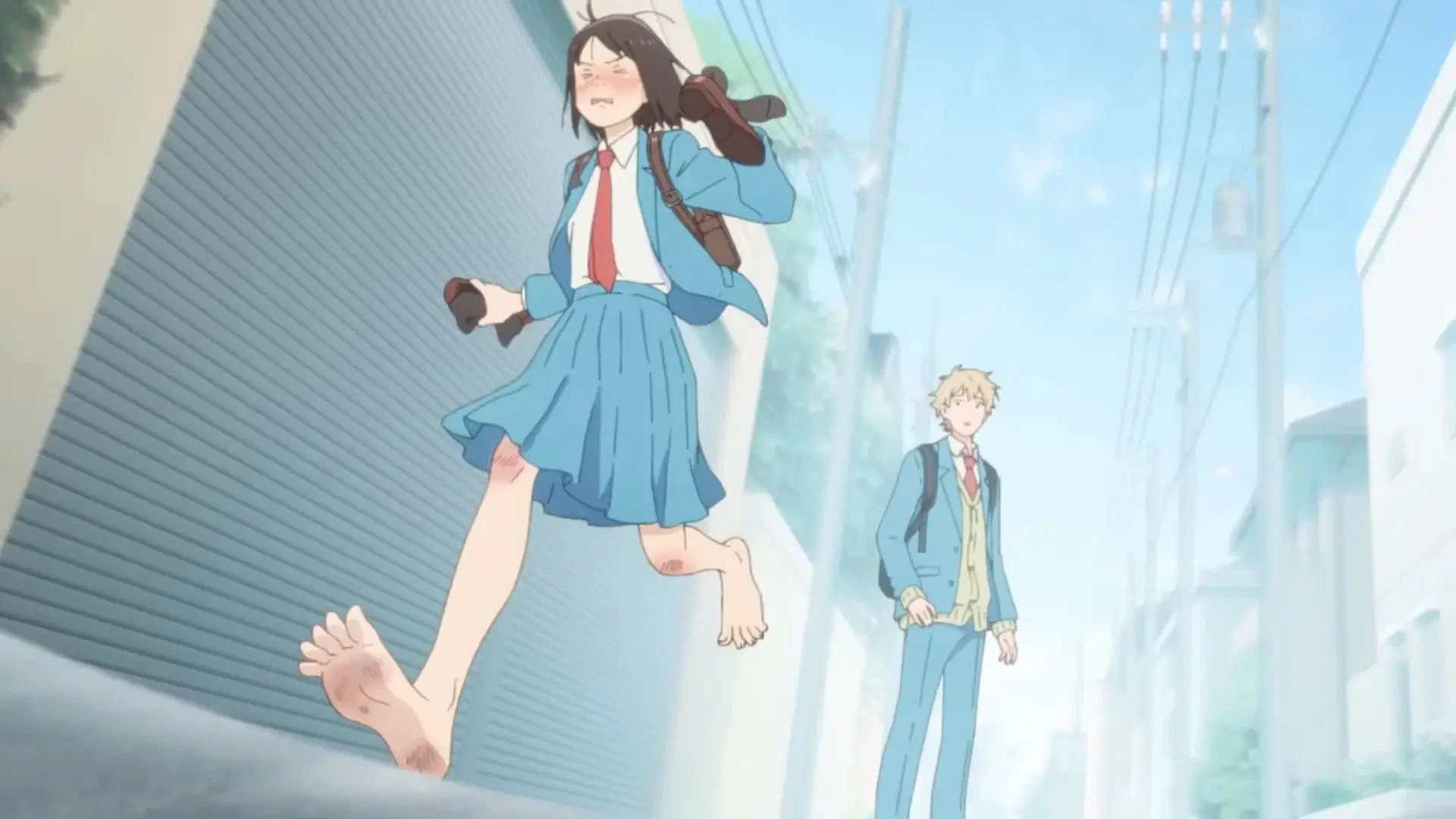
Her experiences challenge her preconceived notions and help her grow as an individual. The series portrays her journey with sincerity, highlighting the importance of embracing change and learning from new experiences.
**Friendship and Connection**: Central to the story is the theme of friendship. Mitsumi’s relationships with her classmates, including Shima, become a source of support and growth. The series emphasizes the value of genuine connections and how they can help individuals overcome obstacles and discover their true selves.
**Cultural and Urban Transition**: The contrast between Mitsumi’s rural background and the urban environment of Tokyo is a recurring theme.
The series explores how this transition affects her perspective and interactions, shedding light on the cultural differences between rural and urban Japan. This theme adds depth to Mitsumi’s character and her journey.
**Resilience and Determination**: Mitsumi’s resilience and determination are central to her character. Despite the challenges she faces, she remains optimistic and persistent in pursuing her goals. Her unwavering spirit inspires those around her and serves as a reminder of the importance of perseverance.
**Mitsumi Iwakura**: Mitsumi is the protagonist of the series. Her earnestness, intelligence, and determination make her a compelling character. She is driven by her desire to make a positive impact on society, and her journey is marked by moments of growth and self-reflection. Mitsumi’s relatability and authenticity endear her to readers.
**Shima Sousuke**: Shima is a laid-back and friendly classmate who becomes Mitsumi’s first friend in Tokyo. His easygoing nature contrasts with Mitsumi’s intense ambition, creating a dynamic and supportive friendship. Shima’s own journey of self-discovery and the revelations about his past add depth to his character.
**Supporting Characters**: The series features a diverse cast of supporting characters, each with their own unique personalities and storylines.
These characters include Mitsumi’s classmates, teachers, and family members, all of whom contribute to the richness of the narrative. Their interactions with Mitsumi provide different perspectives on life and friendship.
Misaki Takamatsu’s art style is clean and expressive, effectively conveying the emotions and nuances of the characters. The detailed backgrounds capture the essence of both rural and urban settings, enhancing the storytelling. The character designs are distinct and memorable, with each character’s personality reflected in their appearance.
The pacing of the manga is well-balanced, with a blend of humorous and serious moments. The panel layouts and compositions are thoughtfully crafted, allowing for smooth and engaging storytelling. Takamatsu’s ability to capture subtle expressions and body language adds depth to the characters and their interactions.
“Skip and Loafer” has received positive reviews for its heartwarming story, well-developed characters, and relatable themes.
Critics and readers alike praise the series for its authentic portrayal of adolescence and the challenges of transitioning to a new environment. The manga’s emphasis on personal growth and genuine connections resonates with a wide audience.
The series’ popularity has led to discussions about its potential anime adaptation, with fans eagerly anticipating how the story will be brought to life on screen. Its exploration of universal themes, combined with its unique cultural context, makes “Skip and Loafer” a standout in the slice-of-life genre.
“Skip and Loafer” is a beautifully crafted manga that captures the essence of self-discovery, friendship, and resilience.
Misaki Takamatsu’s storytelling and artistry create a narrative that is both heartwarming and thought-provoking. Mitsumi Iwakura’s journey from a small-town girl to a confident young woman in the big city is filled with relatable experiences and valuable life lessons.
The series’ exploration of cultural transitions and the importance of genuine connections adds depth to its charming and lighthearted narrative. Whether you are a fan of slice-of-life stories or simply looking for a manga that resonates with the human experience, “Skip and Loafer” is a must-read that will leave a lasting impression.
15. Divine Romance: Kamisama Kiss
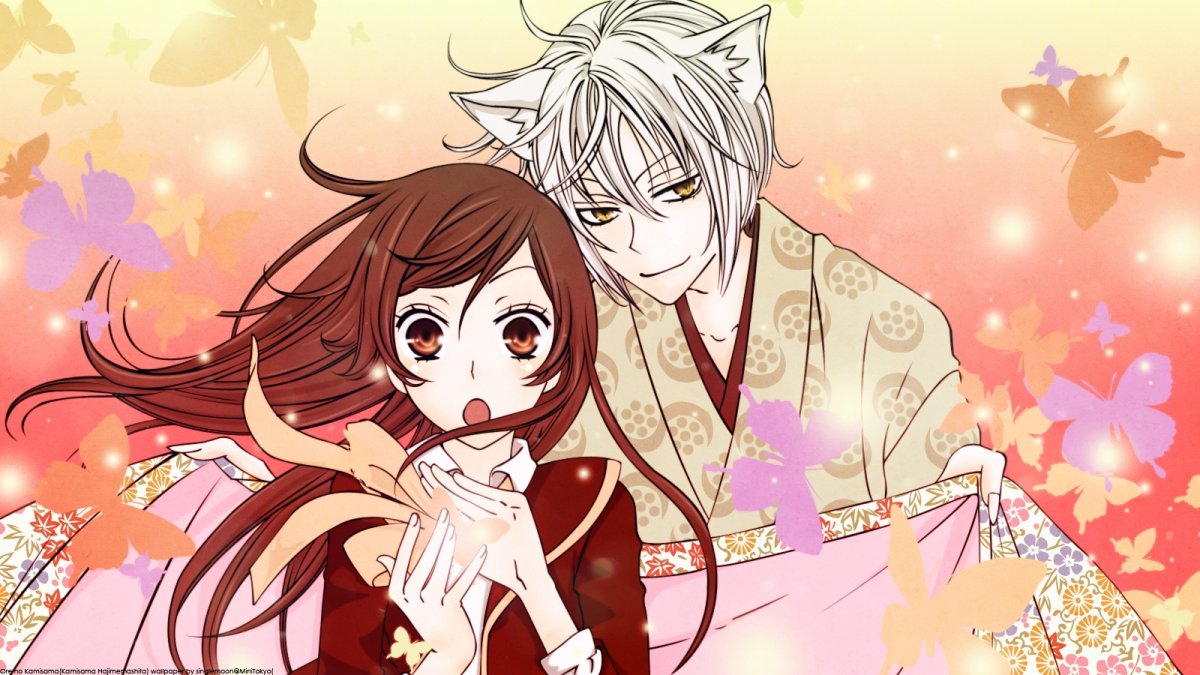
In “Kamisama Kiss,” Nanami Momozono’s life takes a chaotic turn after her father’s financial misfortunes leave them homeless. Fate intervenes when she encounters a mysterious man who bestows upon her the role of the Mikage Shrine’s new land god with a kiss on the forehead.
As Nanami adjusts to her newfound divine responsibilities, she finds herself at odds with Tomoe, a stubborn fox yokai serving as the shrine’s familiar. Despite their initial clashes, a tender bond begins to form between them amidst the chaos of shrine life.
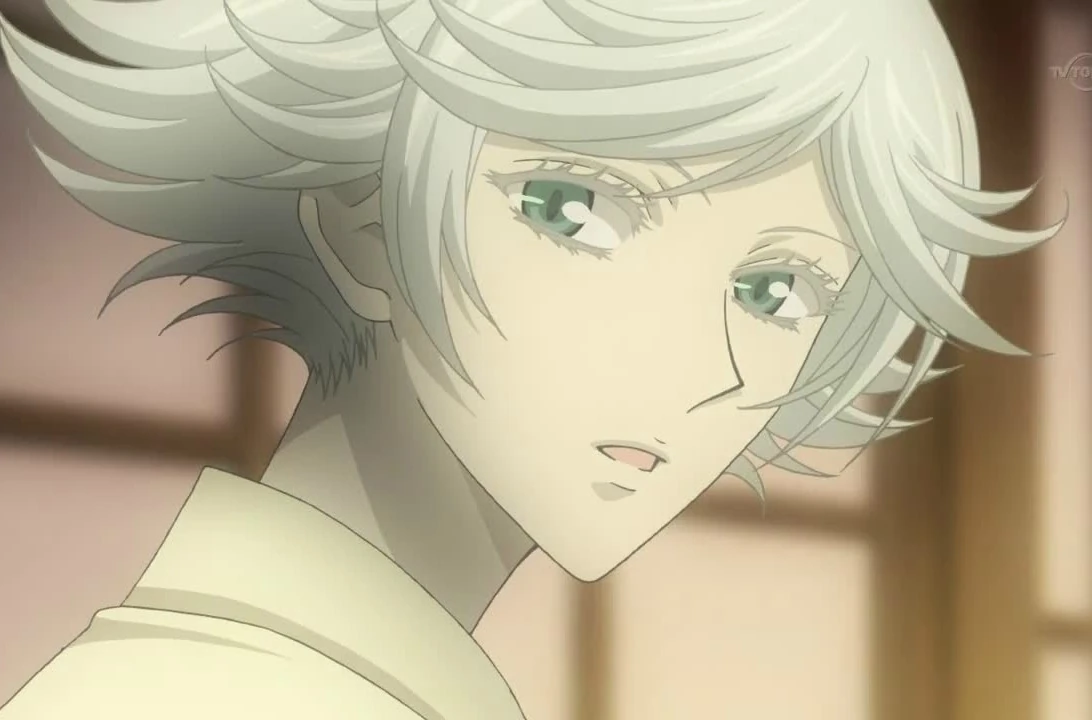
“Kamisama Kiss” weaves a delightful tale of love and adventure, with Nanami and Tomoe’s relationship blossoming against the backdrop of supernatural intrigue.
Through their trials and tribulations, they find the complexities of their feelings, ultimately discovering a deep and enduring love that transcends the boundaries of their worlds.
14. Raeliana’s Cunning Escape
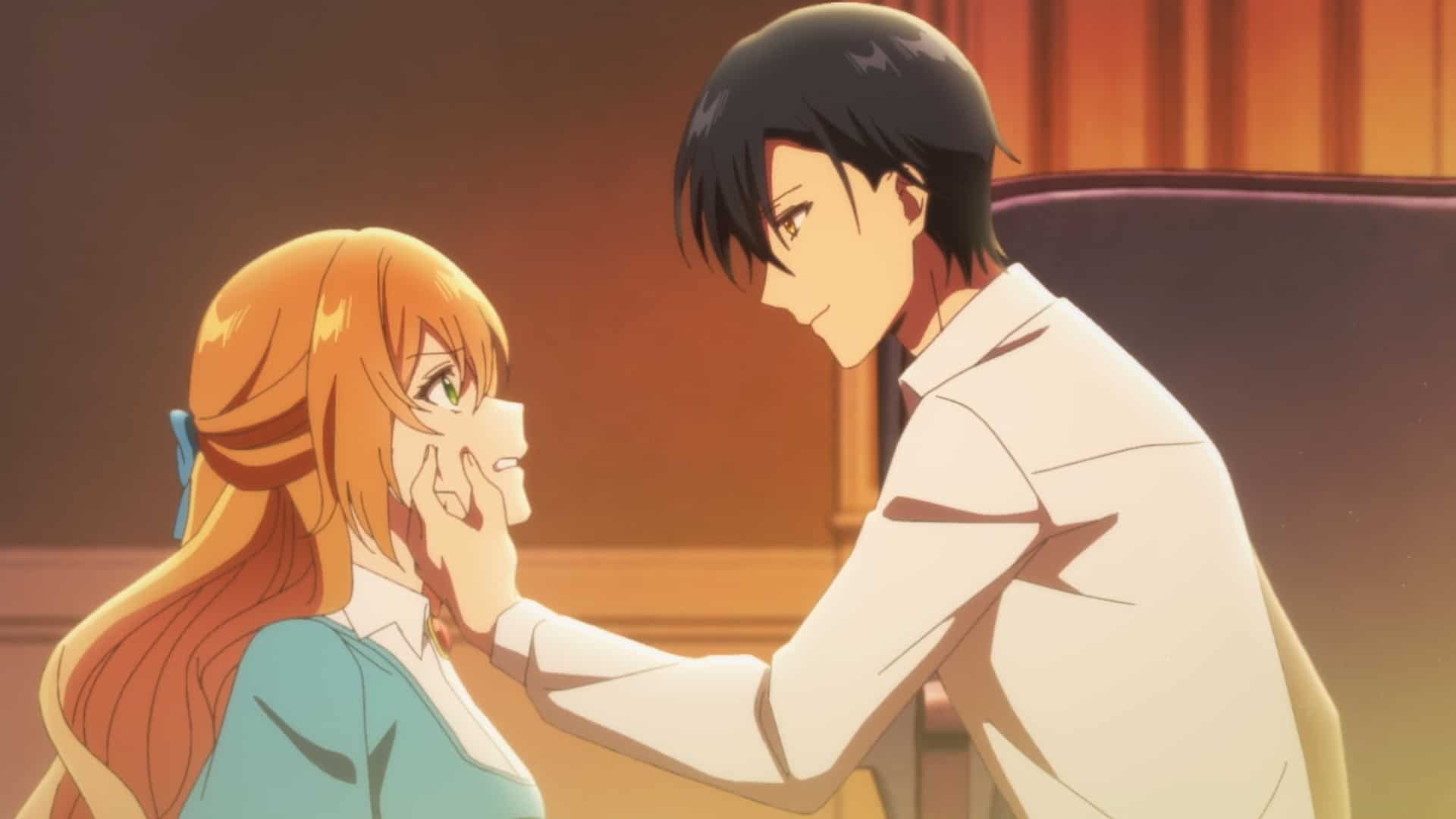
In “Why Raeliana Ended Up at the Duke’s Mansion,” Raeliana finds herself desperately seeking to evade the advances of Francis Brooks, a suitor with malicious intent who is after her wealth.
With her back against the wall, she opts for a bold strategy: blackmail. Her target? Duke Noah Wynknight, a man far from ordinary, whose reaction to her scheme is neither of anger nor threat but rather amusement and curiosity.
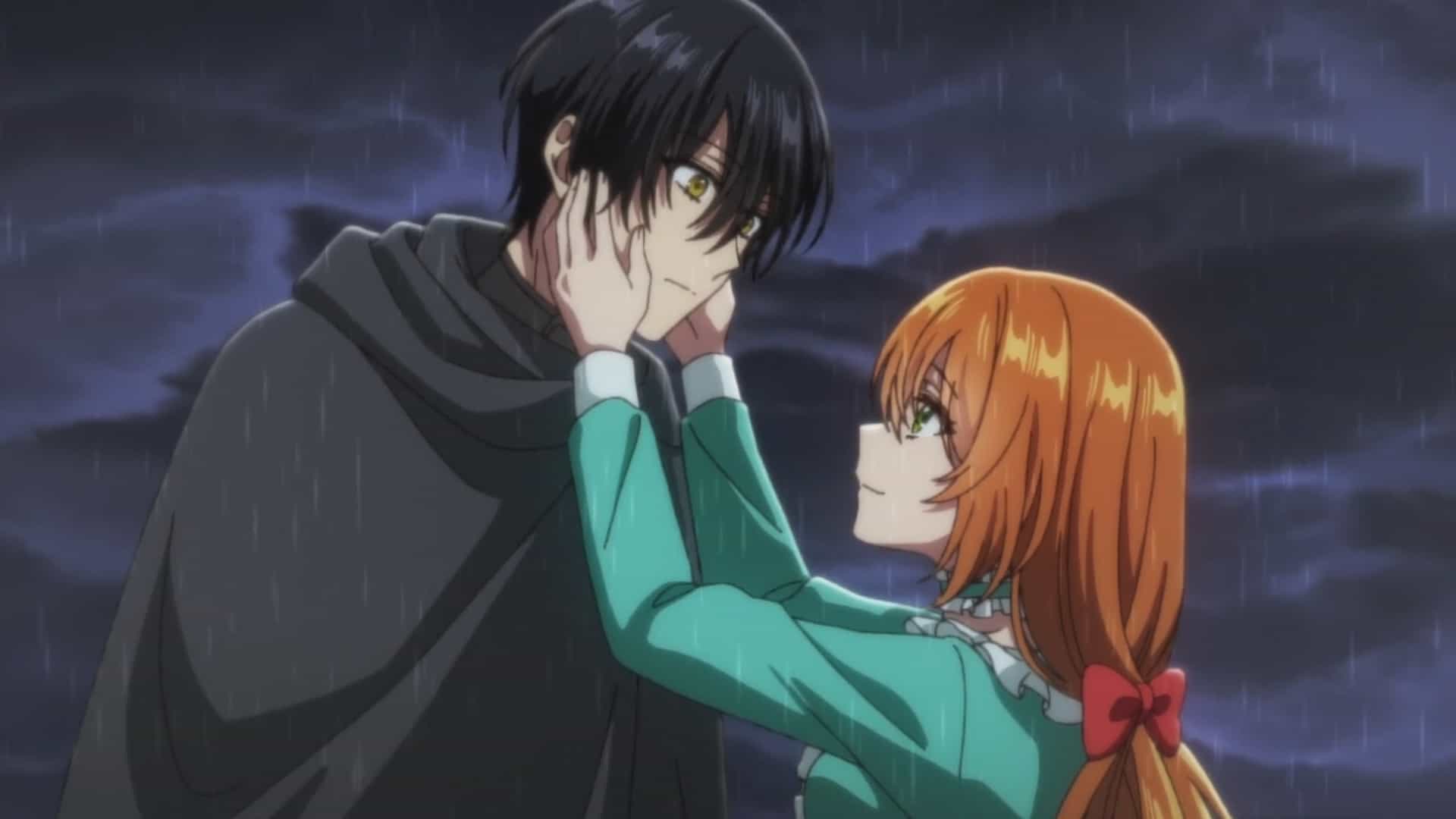
Duke Wynknight finds himself sufficiently charmed and intrigued by Raeliana’s audacity to propose a fake engagement, a common trope in romantic narratives that often comes with a presumed expiration date.
Raeliana, under the impression she’s merely a temporary fixture in this arrangement, is unaware of the Duke’s hidden agenda and the unexpected turns their faux relationship might take.
13. Tomo-chan Is a Girl!
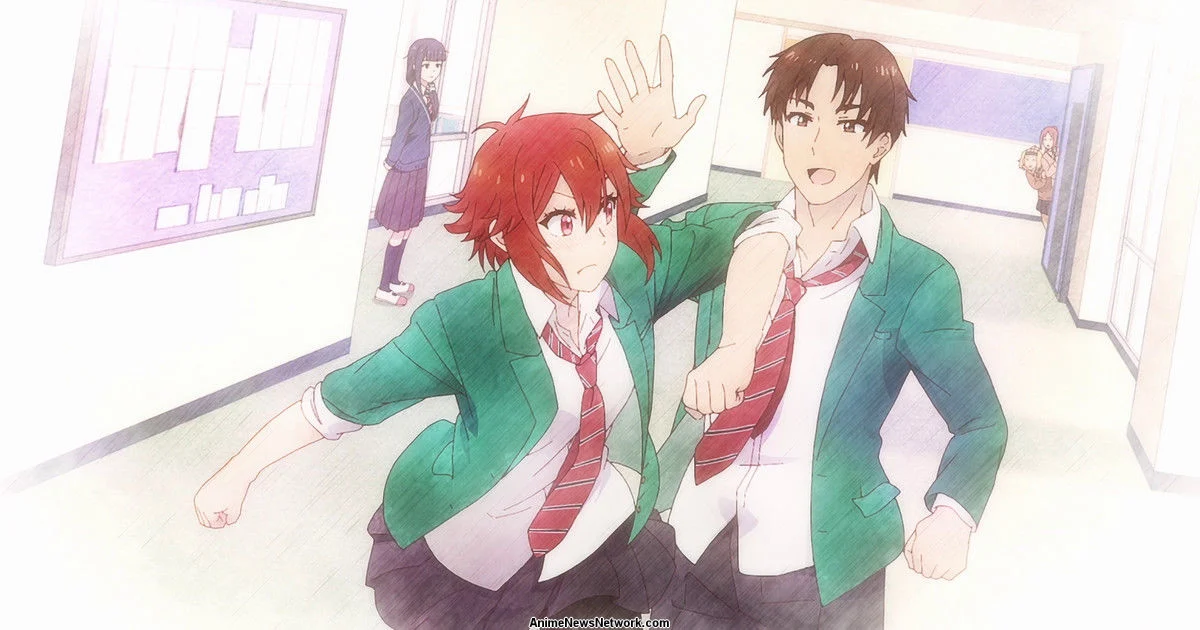
“Tomo-chan Is a Girl!” steals the spotlight as the must-watch romantic comedy of the 2023 winter anime season, weaving a tale that tugs at the heartstrings.
Meet Tomo Aizawa, a spirited tomboy with a heart full of courage. When she finally musters the bravery to confess her feelings to her childhood friend Jun, hilarity ensues as Jun, dense as ever, misinterprets her heartfelt confession as a simple expression of gratitude for their friendship.
But there’s more to this story than meets the eye. Tomo, in her own misunderstanding, believes Jun sees her only as “one of the guys,” oblivious to his true feelings. As their journey unfolds, viewers discover the depth of Jun’s affection for Tomo, despite his struggles to articulate it.
Amidst the laughter and hijinks orchestrated by Tomo’s friends in their attempts to transform her, Jun remains unwavering in his love for her, embracing her uniqueness wholeheartedly.
With a blend of endearing misunderstandings and touching moments, “Tomo-chan Is a Girl!” paints a vivid picture of the joys and complexities of young love, reminding us all of the beauty of being true to ourselves.
In the heartwarming anime Tomo-chan Is a Girl!, we’re introduced to the inseparable childhood friends Tomo Aizawa and Junichirou Jun Kubota. Their bond is unbreakable, with Tomo harboring a deep, secret love for Jun that she’s held onto for years. However, there’s a twist: while Tomo sees Jun as more than just a friend, Jun only sees her as a beloved sister figure.
As they enter their first year of high school, Tomo bravely decides to confess her feelings to Jun. But alas, her heartfelt confession is misinterpreted, leaving Jun to believe that Tomo sees him solely as a brother. Determined to break through Jun’s obliviousness and make him see her as a romantic partner, Tomo looks on a series of hilarious and heartwarming antics to shake up their dynamic.
Through laughter, tears, and plenty of misunderstandings, Tomo-chan Is a Girl! follows Tomo’s journey as she tries to look the complexities of love and friendship. Will she finally succeed in winning Jun’s heart, or will their bond remain stuck in the friend zone forever? Join Tomo and Jun on this swoon-worthy adventure filled with love, laughter, and the joys of youthful romance.
Tomo-chan Is a Girl! is a popular Japanese web manga series written and illustrated by Fumita Yanagida. It started serialization on the Japanese webcomic site Pixiv in 2015 and quickly gained a large following. The series is known for its comedic and heartwarming story centered around its main characters.
The story revolves around Tomo Aizawa, a tough and athletic high school girl who is often mistaken for a boy due to her appearance and behavior. Her childhood friend, Junichirou Kubota (nicknamed Jun), has been by her side since they were kids. Despite Tomo’s tough exterior, she harbors romantic feelings for Jun. However, Jun is oblivious to Tomo’s feelings and only sees her as a buddy.
The manga follows Tomo’s attempts to convey her true feelings to Jun, often leading to comedic misunderstandings and awkward situations. Alongside Tomo and Jun, there are other characters who contribute to the story’s humor and emotional depth.
The main characters include Tomo Aizawa, who is the protagonist and an athletic girl often mistaken for a boy due to her blunt personality. Junichirou Kubota (Jun) is Tomo’s childhood friend, calm and easy-going, who remains oblivious to Tomo’s romantic feelings towards him.
Misuzu Gundou is another friend of Tomo and Jun, more perceptive and feminine compared to Tomo. Lastly, Carol Olston is a cheerful foreign exchange student who brings a lively dynamic to the group.
Tomo-chan Is a Girl! primarily follows the themes of friendship, unrequited love, and self-discovery. The series balances humor with moments of emotional sincerity as Tomo finds her feelings and relationships. The comedic elements arise from Tomo’s attempts to confess her feelings to Jun, only to be misunderstood or interrupted comically.
Fumita Yanagida’s art style is clean, and expressive, and suits the comedic tone of the series. Characters are drawn with distinct features and exaggerated expressions that enhance the humor.
The series has garnered widespread popularity both in Japan and internationally. It appeals to readers with its charming characters, relatable romantic tension, and humorous storytelling. Tomo-chan Is a Girl! has been praised for its endearing characters and ability to blend comedy with heartfelt moments.
Tomo-chan Is a Girl! is a delightful romantic comedy manga that follows themes of friendship and unrequited love in a light-hearted and entertaining manner. Fans of comedic romance will appreciate its witty dialogue, lovable characters, and engaging storyline. Whether you enjoy romance, comedy, or slice-of-life genres, this manga is worth checking out for its charming and relatable narrative.
12. Monthly Girls’ Nozaki-Kun
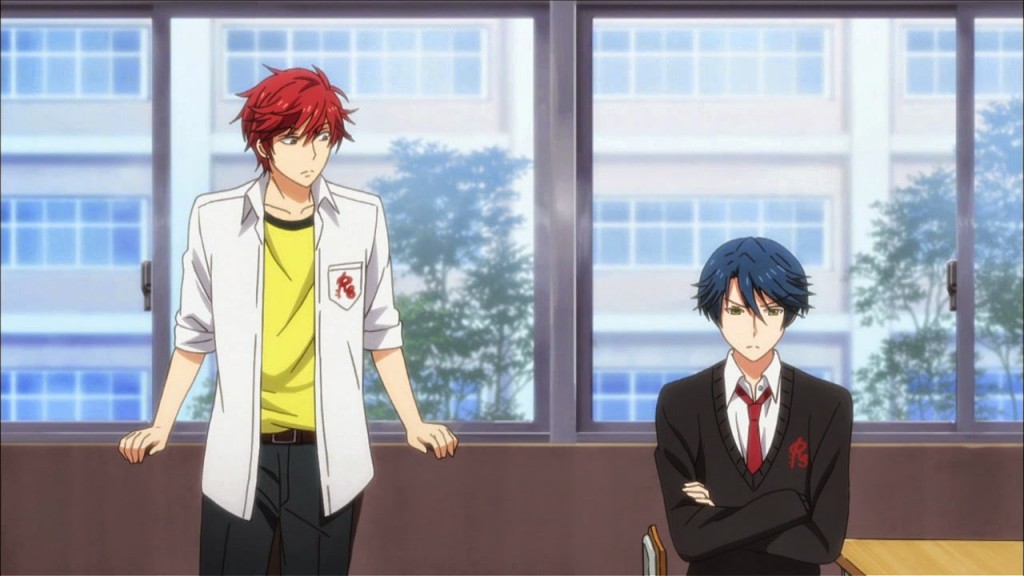
“Monthly Girls’ Nozaki-kun” invites viewers into a world of comedic misunderstandings and budding romance, weaving a tale that charms with its quirky characters and humorous plot twists.
Follow the journey of Chiyo Sakura, a young girl hopelessly infatuated with the clueless mangaka Umetaro Nozaki.
When she gathers the courage to confess her feelings, fate plays a prank as Nozaki mistakes her intentions, inviting her to become his assistant instead. Thus begins Sakura’s foray into manga creation, all while harboring secret hopes of revealing her true feelings to Nozaki.
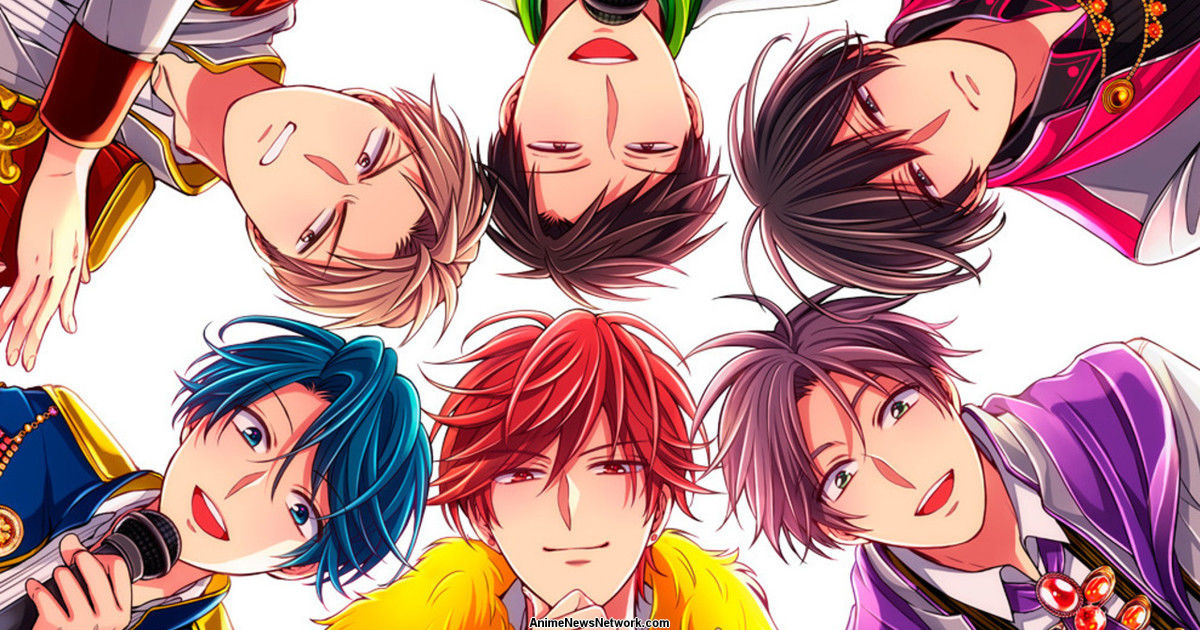
At the heart of the hilarity is Nozaki himself, a character blissfully oblivious to the nuances of human interaction. His literal interpretation of situations and inability to grasp Sakura’s subtle hints set the stage for countless comedic moments.
Yet, amidst the chaos, a tender romance begins to blossom, as Sakura navigates the complexities of love and friendship in a world filled with eccentric characters.
With a vibrant supporting cast adding to the laughter, “Monthly Girls’ Nozaki-kun” delights audiences with its witty dialogue, charming animation, and heartwarming moments. It’s a rom-com that captures the essence of youthful crushes and the joy of unexpected connections, leaving viewers eagerly anticipating each new episode.
11. Kiss Him, Not Me
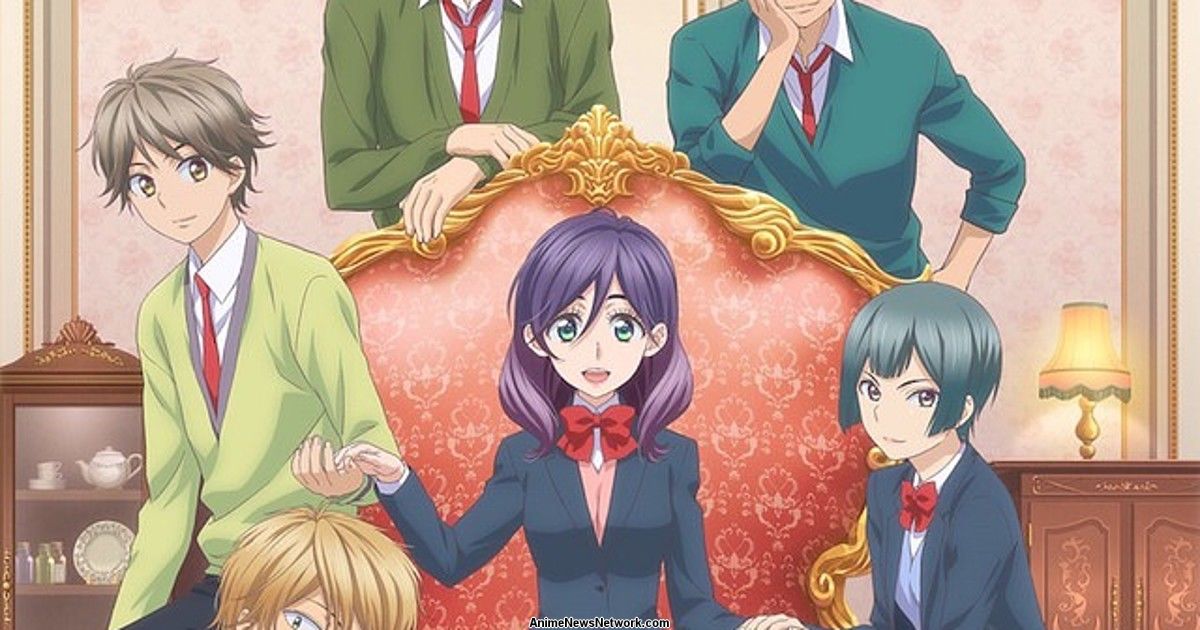
In “Kiss Him, Not Me,” protagonist Kae Serinuma flips the script on the typical reverse harem scenario, adding a delightful twist to the genre.
Follow the hilarious misadventures of Kae, a fervent fujoshi who finds herself unexpectedly at the center of an unwanted reverse harem. While her suitors vie for her affections, Kae’s heart lies elsewhere as she daydreams of her favorite anime boys finding love with each other instead.
What sets “Kiss Him, Not Me” apart is its ingenious subversion of reverse harem tropes, as Kae’s active imagination and unconventional preferences thwart her admirers’ attempts to win her over. Their comedic efforts to capture her attention provide endless amusement, making for an entertaining and laughter-filled journey.
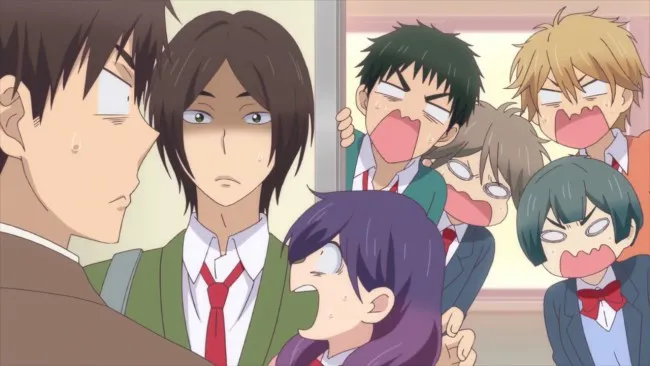
Adding to the charm of the series are its clever nods to popular anime franchises like Attack on Titan and Jojo’s Bizarre Adventure, injecting a dose of humor and relatability for the audience.
These references enrich the viewing experience, enhancing the already delightful storyline with a playful layer of familiarity.
With witty dialogue, endearing characters, and a refreshing take on romance, “Kiss Him, Not Me” is a must-watch for fans seeking a comedic escape into reverse harem anime.
Prepare to laugh, swoon, and cheer for Kae as she navigates the hilarious complexities of love and fandom.
10. Toradora!: Where Laughter and Love Collide

“Toradora!” follows the journey of Ryuuji Takasu and Taiga Aisaka, two teenagers with a unique pact to help each other win over their crushes. However, as they find through this plan, they discover that their hearts may be leading them in a different direction.
The bond between Ryuuji and Taiga forms the heart of the series, as they traverse the ups and downs of teenage romance with humor and authenticity. Despite their initial setbacks, their relationship blossoms, revealing the transformative power of genuine connection.

Supported by a diverse cast of characters, each with their own quirks and growth arcs, “Toradora!” offers a rich and engaging narrative. From comedic escapades to heartfelt revelations, the series delivers a rollercoaster of emotions that resonates with viewers.
Beyond its comedic elements, “Toradora!” also delivers poignant and romantic moments that tug at the heartstrings. With one of the most memorable romantic scenes in anime history, the series leaves a lasting impact on its audience, grabbing them with its warmth and sincerity.
“Toradora!” is more than just a funny anime—it’s a heartfelt exploration of love and friendship that leaves viewers feeling uplifted and inspired long after the final episode.
9. Kaguya-sama: Love Is War

“Kaguya-sama: Love is War” is an anime that incorporates a game of romance between Student Council President Miyuki Shirogane and Vice President Kaguya Shinomiya.
Both are unwilling to confess their feelings first, fearing rejection or appearing vulnerable. The series revolves around their amusing strategies to outwit each other and prompt a confession.
A standout feature of “Kaguya-sama: Love is War,” particularly in the English dub, is the witty commentary provided by the narrator, voiced by Ian Sinclair.
His humorous insights add depth to the storyline and enhance the comedic elements of the show. Additionally, the supporting cast plays a vital role, serving as allies and obstacles in the protagonists’ schemes.
From clever schemes to unexpected outcomes, “Kaguya-sama: Love is War” delivers non-stop entertainment. Each episode is filled with laughter and suspense as viewers eagerly await the next move in this romantic battle of wits
“Kaguya-sama: Love is War” (original title: “Kaguya-sama wa Kokurasetai: Tensai-tachi no Ren’ai Zunōsen”) is a romantic comedy manga written and illustrated by Aka Akasaka.
It has been adapted into a highly successful anime series by A-1 Pictures, with the first season airing in 2019. The series has grabbed audiences with its unique blend of humor, romance, and psychological warfare, making it a standout in the rom-com genre.
The story is set in the prestigious Shuchiin Academy, home to some of the brightest and most privileged students. At the heart of the series are Kaguya Shinomiya, the wealthy and brilliant vice president of the student council, and Miyuki Shirogane, the hardworking and equally intelligent student council president.
Despite their mutual attraction, both are too proud to confess their feelings, believing that the first to do so would be the “loser” in their battle of love.
Instead, they engage in a series of mind games, each trying to outwit the other into confessing first. The series is structured around these elaborate schemes, which often involve misunderstandings, over-the-top strategies, and hilarious outcomes.
Supporting characters, such as the airheaded secretary Chika Fujiwara, the gloomy but loyal treasurer Yu Ishigami, and the perceptive yet eccentric Ai Hayasaka, add to the dynamic and comedic environment of the student council.
**Psychological Warfare in Romance**: The central theme of “Kaguya-sama: Love is War” is the psychological battle between Kaguya and Miyuki.
Their interactions are reminiscent of strategic warfare, with each trying to outmaneuver the other. This unique approach to romance adds depth and complexity, making their relationship intriguing and entertaining.
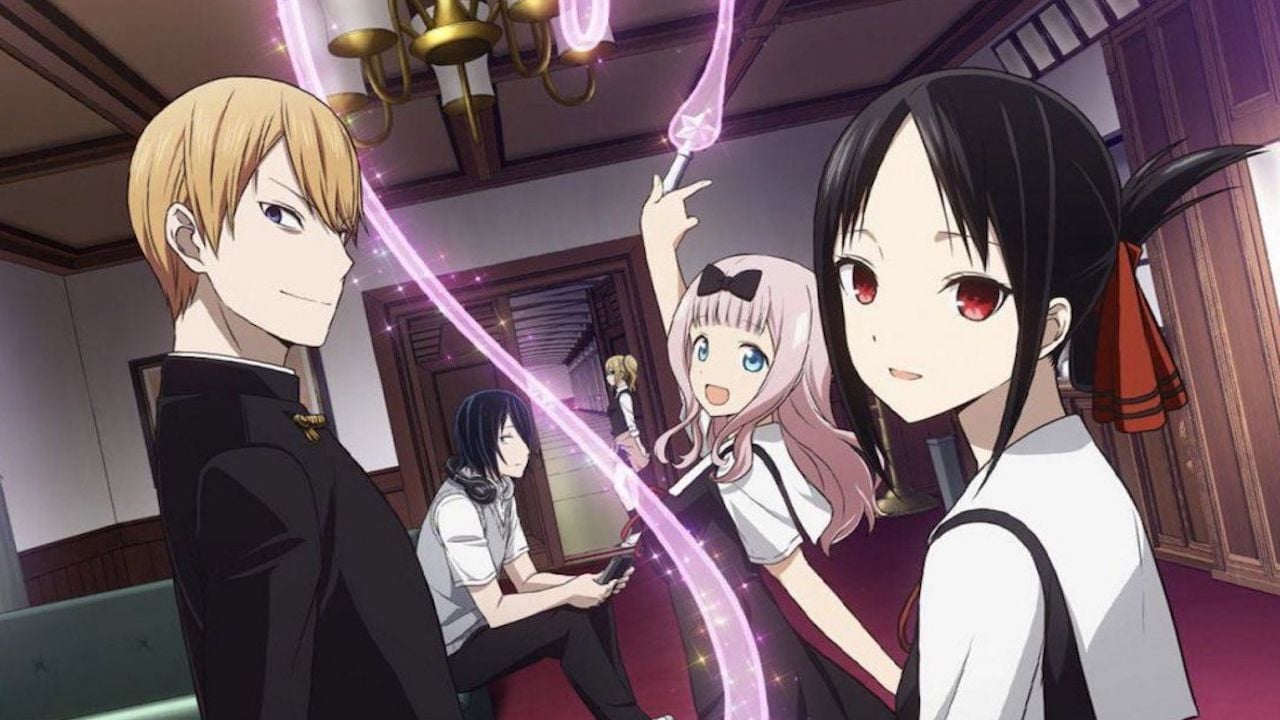
**Pride and Vulnerability**: Both Kaguya and Miyuki are depicted as proud individuals, afraid of exposing their vulnerabilities. Their pride leads to comedic situations but also highlights their underlying insecurities and the lengths they go to protect their egos. This theme is explored with humor and sensitivity, showing that even the most confident individuals have their moments of doubt.
**The Importance of Friendship**: The series emphasizes the value of friendship and camaraderie. The student council members share a close bond, supporting each other through personal struggles and misunderstandings. Their interactions provide a balance to the intense romantic rivalry, adding warmth and depth to the story.
**Social Class and Expectations**: Kaguya comes from a wealthy and influential family, while Miyuki is a scholarship student from a modest background.
The series explores the impact of social class on their relationship and the expectations placed on them by society and their families. This theme adds a layer of realism to their romance, highlighting the challenges they face beyond their mind games.
**Kaguya Shinomiya**: Kaguya is the daughter of a powerful conglomerate family, known for her intelligence, beauty, and cold demeanor.
However, beneath her stoic exterior, she is deeply in love with Miyuki and struggles with her feelings. Her character development is central to the story, as she learns to navigate her emotions and break free from her family’s expectations.
**Miyuki Shirogane**: Miyuki is the hardworking and diligent president of the student council. He excels academically and is highly respected by his peers.
Despite his composed exterior, he is equally infatuated with Kaguya and engages in their romantic battles with determination. His background as a scholarship student adds depth to his character, showing his perseverance and drive.
**Chika Fujiwara**: Chika is the cheerful and somewhat oblivious secretary of the student council. Her playful and carefree nature often disrupts the serious atmosphere created by Kaguya and Miyuki’s battles. Despite her seemingly airheaded demeanor, she occasionally exhibits moments of unexpected wisdom and insight.
**Yu Ishigami**: Yu is the reclusive and pessimistic treasurer of the student council. Initially introduced as a background character, his backstory and personal struggles are gradually revealed, adding emotional depth to the series. His loyalty to his friends and growth as a person make him a beloved character among fans.
**Ai Hayasaka**: Ai is Kaguya’s maid and close confidante, often helping her with her schemes. She is perceptive, resourceful, and capable of adapting to various situations. Her dynamic with Kaguya adds another layer to the story, showcasing their close bond and mutual respect.
Aka Akasaka’s art style in the manga is detailed and expressive, effectively capturing the characters’ emotions and the comedic timing of their interactions. The anime adaptation by A-1 Pictures elevates the source material with vibrant animation, dynamic visuals, and creative direction.
The use of visual metaphors and dramatic imagery enhances the psychological warfare aspect of the story, making the mind games visually engaging.
“Kaguya-sama: Love is War” has received widespread acclaim for its innovative approach to romantic comedy. The series has been praised for its sharp writing, well-developed characters, and the balance between humor and emotional depth. It has won several awards, including the prestigious Shogakukan Manga Award, and has a dedicated fanbase worldwide.
The anime adaptation has further boosted the series’ popularity, with multiple seasons and an OVA receiving high ratings and positive reviews. The catchy opening themes, memorable voice acting performances, and iconic scenes, such as the “Chika Dance,” have become cultural phenomena in the anime community.
“Kaguya-sama: Love is War” stands out as a modern classic in the romantic comedy genre, offering a fresh and clever take on the battle of love. Aka Akasaka’s masterful storytelling, combined with A-1 Pictures’ exceptional animation, creates a series that is both hilarious and heartwarming.
Whether you are drawn to its psychological mind games, endearing characters, or the exploration of pride and vulnerability in romance, “Kaguya-sama: Love is War” is a must-watch for any anime enthusiast.
8. Raven of the Inner Palace
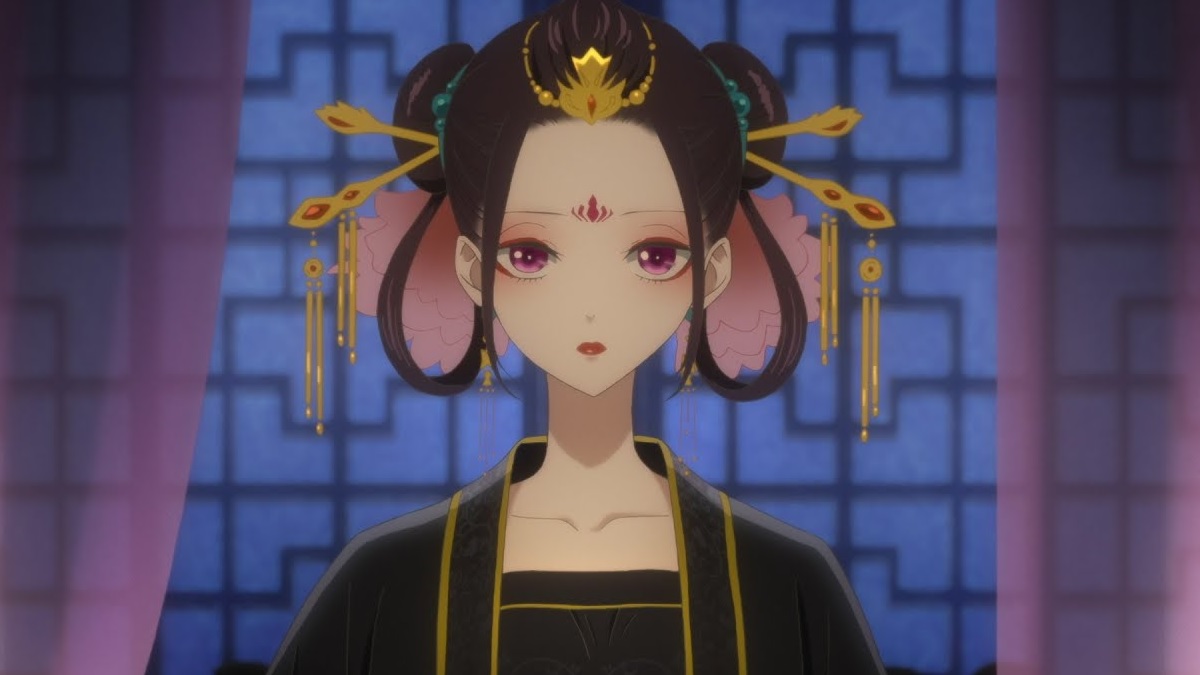
In “Raven of the Inner Palace,” Lu Shouxue epitomizes the tsundere archetype, albeit with a refreshing twist. Initially unfamiliar with forming close bonds, she reacts stiffly to the Emperor’s attempts at friendship. The Emperor, with his undeniable charm, seeks to penetrate her defensive exterior, only to be met with her curt and seemingly indifferent responses.
Tsundere characters, known for their frosty demeanor that conceals a warmer, softer interior, have long been a staple in romantic narratives, often portrayed as female leads who gradually reveal their tender side to the male protagonist.
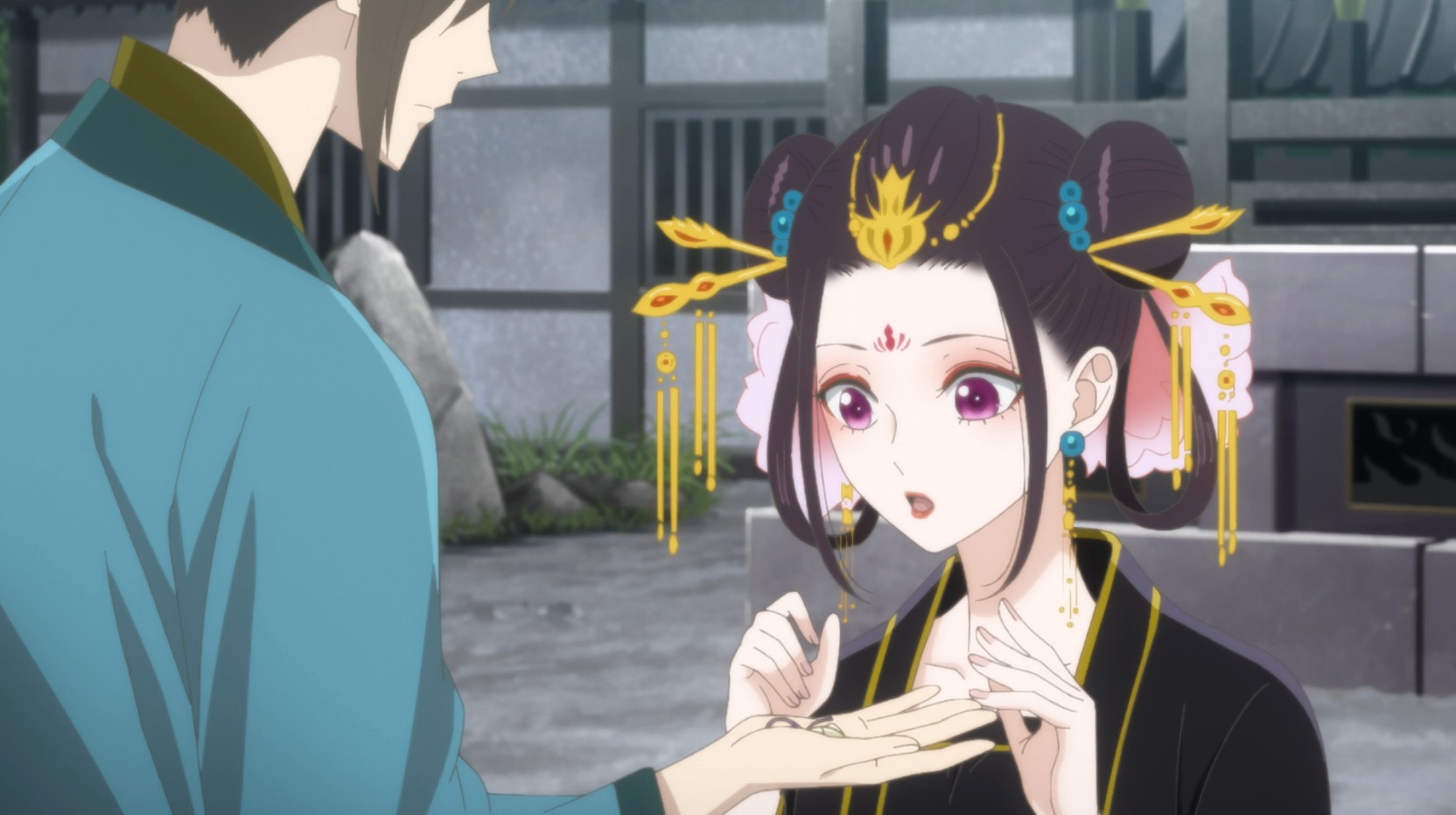
However, the trend has shifted, with male tsundere becoming more prevalent in recent stories. Lu Shouxue’s portrayal as a tsundere female lead, therefore, harks back to the classic portrayal, offering a nostalgic yet fresh dynamic.
Her balance between aloofness and appeal makes her character intriguing, as she navigates her complex feelings towards the Emperor’s advances, embodying the tsundere’s characteristic oscillation between coldness and affection.
7. My Love Story with Yamada-kun at Lv999
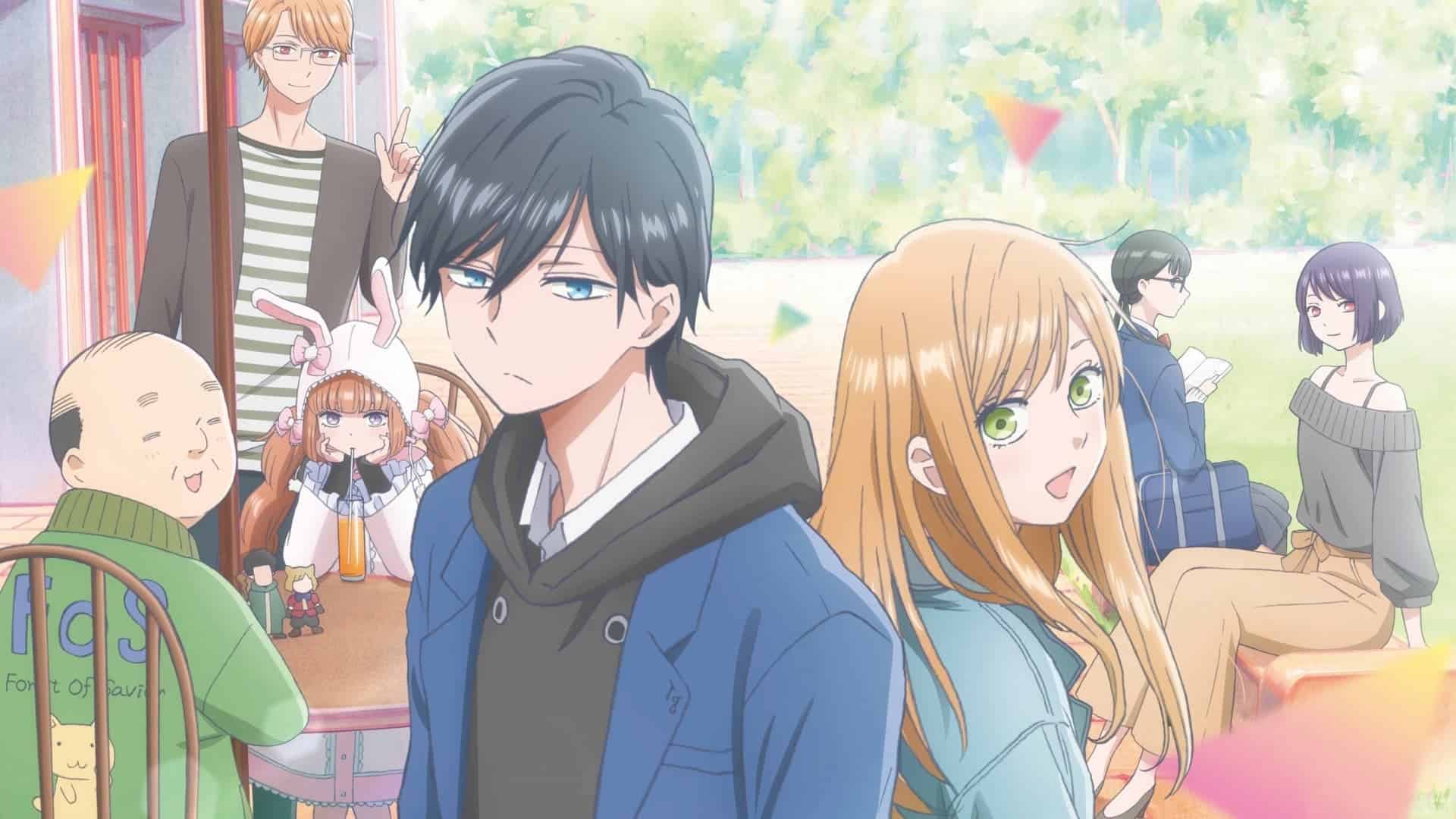
In “My Love Story with Yamada-kun at Lv999,” Akane finds herself in a series of embarrassing mishaps, embodying the bakadere trope with charm and grace. Characterized by their endearing clumsiness and often comedic misunderstandings, bakadere characters like Akane add a layer of relatability and humor to shojo narratives.
Her journey begins on a sour note, with her being abruptly dumped by her boyfriend, leading her into the path of Yamada, a skilled and attractive gamer whose cool demeanor stands in stark contrast to her own warm and bumbling personality.
Mistaking Yamada’s kuudere calmness for aloofness, Akane’s attempts to bridge their differences only result in more comical slip-ups, from tumbling out of her footwear to an unintentional drunken escapade during their first outing.
Despite the series of faux pas, Akane’s likable nature and genuine kindness shine through, painting a portrait of a young woman guiding the complexities of love with
“Loving Yamada at Lv999” (original title: “Yamada-kun to Lv999 no Koi wo Suru”) is a delightful romantic comedy manga written and illustrated by Mashiro.
It captures the unique charm of modern relationships in the digital age, particularly those that blossom through online gaming. The series combines humor, romance, and the intricacies of gaming culture, making it a refreshing addition to the romance genre.
The story centers around Akane Kinoshita, a university student who finds solace in online gaming after a painful breakup.
She plays an MMORPG called “Forest of Savior,” where she meets the aloof and enigmatic Yamada, a top-tier player known for his incredible gaming skills. Despite his gaming prowess, Yamada is socially awkward and seems disinterested in romance.
Akane’s initial interactions with Yamada are purely in-game, but circumstances soon lead them to meet in real life. As they navigate the complexities of their personal lives and gaming world, their relationship evolves from mere gaming companions to something deeper. The manga explores their journey of understanding each other, overcoming personal challenges, and finding love in unexpected places.
**Akane Kinoshita**: Akane is a relatable protagonist who starts the series nursing a broken heart. Her character is depicted with a mix of vulnerability and resilience, making her journey of self-discovery and new-found love engaging. She is passionate about gaming, which becomes a crucial part of her healing process and a bridge to new friendships and relationships.
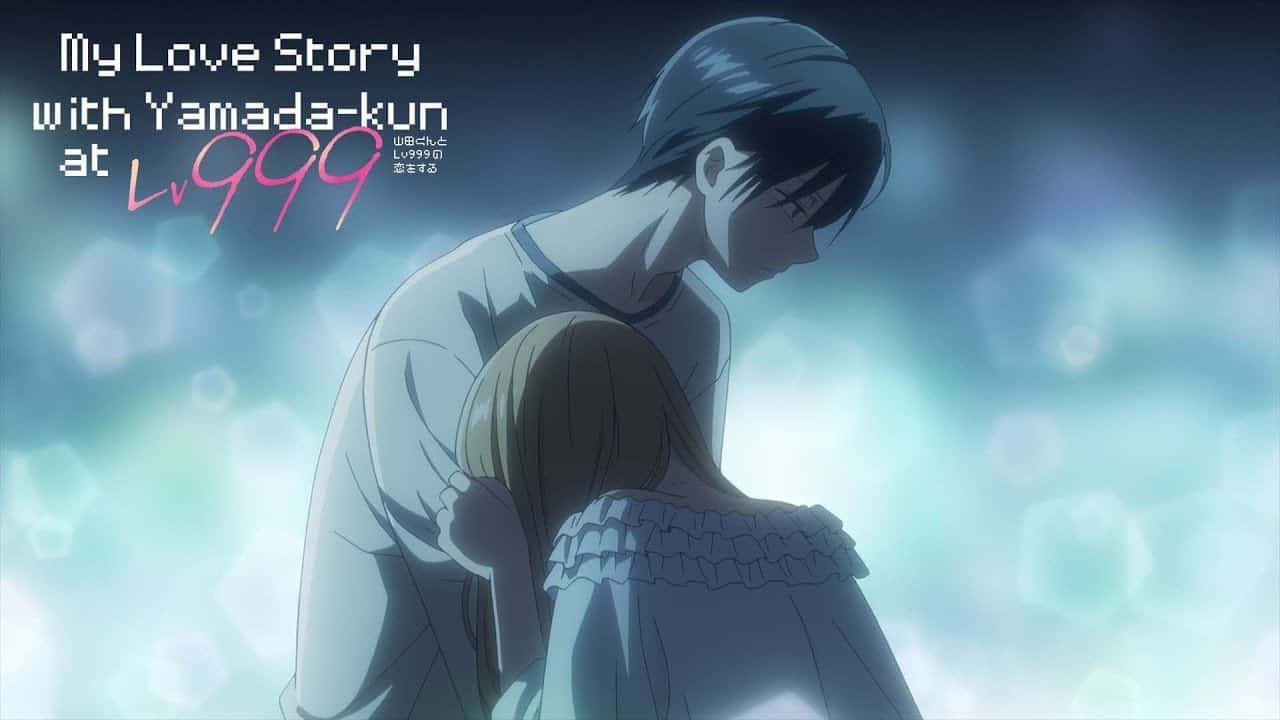
**Akito Yamada**: Yamada is the quintessential gamer, highly skilled but socially inexperienced. His character is initially portrayed as detached and indifferent to romantic advances, but as the story progresses, layers of his personality are revealed. Yamada’s growth from a reclusive gamer to someone capable of expressing his emotions is central to the manga’s charm.
**Supporting Characters**: The manga features a diverse cast of supporting characters who add depth and variety to the story. These include fellow gamers, university friends, and guild members from “Forest of Savior,” each contributing to the plot’s progression and the main characters’ development.
**Modern Romance**: “Loving Yamada at Lv999” explores contemporary themes of romance in the digital age. It portrays how online interactions can lead to meaningful real-life relationships, highlighting the impact of technology on modern dating culture.
**Self-Discovery and Personal Growth**: Both Akane and Yamada undergo significant personal growth throughout the series. Akane learns to overcome her past heartbreak and open up to new possibilities, while Yamada navigates his social insecurities and learns to connect with others beyond the virtual world.
**Gaming Culture**: The manga goes into MMORPGs, offering a sneak peek into the gaming community and its dynamics. It portrays gaming as more than just a hobby, but as a platform for building friendships, forming communities, and even finding love.
**Humor and Lightheartedness**: The series balances its romantic plot with humor and lighthearted moments. The quirky interactions between characters, both in-game and in real life, add a delightful comedic element that enhances the overall reading experience.
Mashiro’s art style is clean, expressive, and visually appealing. The character designs are distinct and capture the personalities of the main cast effectively.
The in-game scenes are rendered with attention to detail, immersing readers in the fantasy world of “Forest of Savior.” The transitions between real-life and in-game settings are seamless, reflecting the dual nature of the characters’ lives.
“Loving Yamada at Lv999” has been well-received by fans and critics alike. Its fresh take on romance and gaming has resonated with a wide audience, particularly among young adults who can relate to the digital dating experience. The manga’s blend of humor, heartwarming moments, and relatable characters has earned it a dedicated following.
The series has also contributed to a growing trend of manga and anime that focus on online gaming and virtual relationships. By portraying these themes in a positive light, “Loving Yamada at Lv999” encourages readers to appreciate the potential of online interactions to foster real-life connections and personal growth.
“Loving Yamada at Lv999” is a delightful exploration of love in the digital age, offering a perfect blend of romance, humor, and gaming culture.
Mashiro’s engaging storytelling and charming characters make it a standout in the romantic comedy genre. Whether you’re a gamer or just someone looking for a heartwarming love story, this manga offers a refreshing perspective on how love can blossom in the most unexpected places.
Through the lens of Akane and Yamada’s journey, the series highlights the importance of self-discovery, personal growth, and the magic of finding love in the digital world. It’s a testament to the evolving nature of relationships and the enduring appeal of romance in all its forms.
Are you in the mood for that heart-fluttering feeling that only a great, swoon-worthy anime can deliver? Whether you’re feeling mushy, your heart races at the thought of someone special, or you’re contemplating reaching out to an old flame, it sounds like you’re craving a nice love story.
Whether it’s a thrilling “will they/won’t they?” romance that keeps you on the edge of your seat or a poignant tearjerker that leaves you with lingering emotions long after the credits roll, these enchanting anime tales will be your perfect companion as you journey through the world of love.
6. My Dress-Up Darling
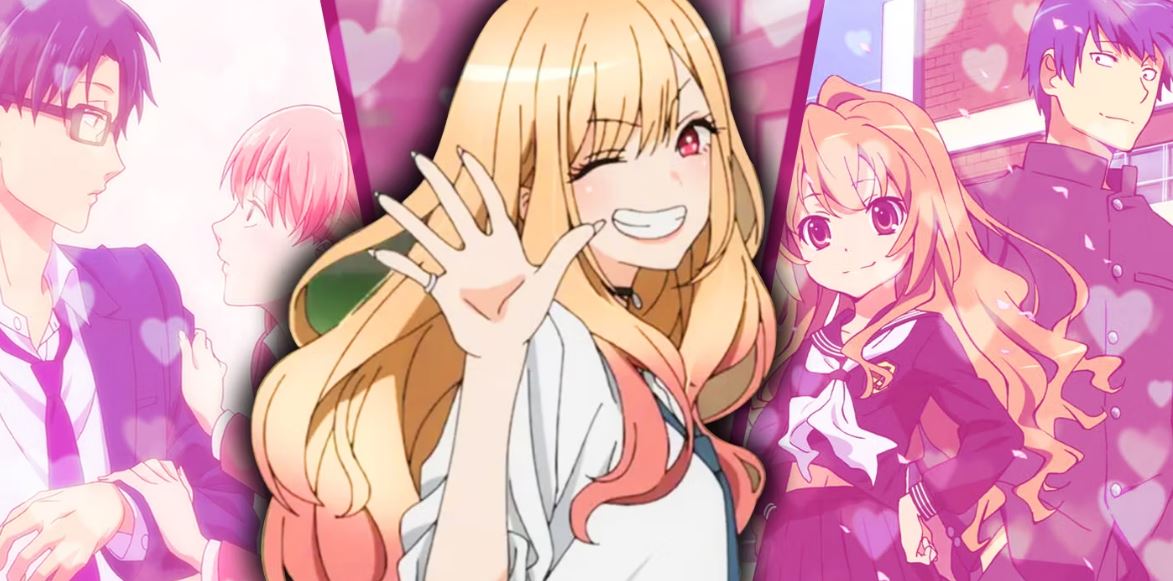
In the enchanting anime My Dress-Up Darling, viewers are treated to a visual feast of stunning animation and charming character designs, courtesy of Shinichi Fukuda’s masterful series adaptation. At the heart of the story is high schooler Wakana Gojou, a talented artisan with a passion for crafting exquisite Hina dolls, inspired by his beloved grandfather.
Despite his remarkable skill, Wakana keeps his hobby hidden from his classmates, fearing ridicule and misunderstanding. However, his carefully guarded secret is about to be revealed when he crosses paths with the fascinating Marin Kitagawa, a girl who exudes confidence, grace, and beauty in equal measure.
Thus begins their delightful journey in My Dress-Up Darling, as Wakana and Marin join forces, working side by side and gradually forming a deep bond. As they collaborate on various cosplay projects, their friendship blossoms into something more, with feelings of affection blooming between them.
“My Dress-Up Darling” (Sono Bisque Doll wa Koi wo Suru) is a popular Japanese manga series written and illustrated by Shinichi Fukuda. Serialized in Square Enix’s Young Gangan magazine since 2018, the series has gained significant attention for its unique premise and endearing characters.
The story follows the unlikely friendship and budding romance between Marin Kitagawa, a talented and popular high school girl admired for her beauty and outgoing personality, and Wakana Gojou, a reserved and skilled amateur doll maker. Wakana harbors a passion for creating intricate dolls but keeps this hobby a secret due to societal expectations and stereotypes.
When Wakana accidentally discovers Marin’s interest in cosplay and costume-making, he becomes intrigued and eventually coerces her into modeling his doll clothing creations. Despite their contrasting personalities, Marin and Wakana form a heartwarming bond through their shared passion for crafting and self-expression.
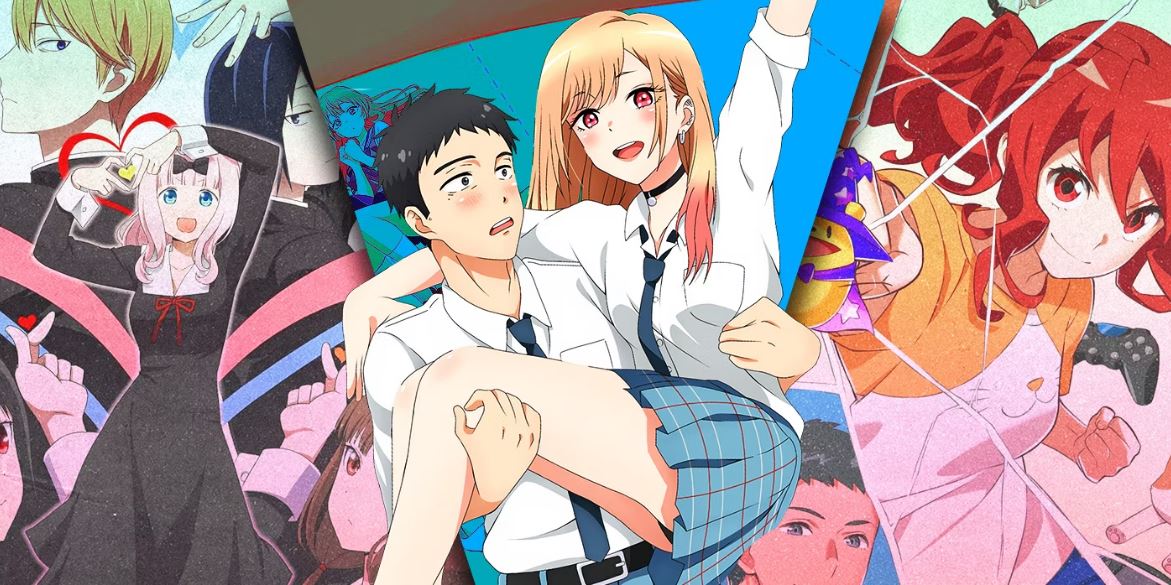
As their friendship deepens, romantic feelings begin to blossom, leading to emotional and humorous moments as they find their evolving relationship and the challenges of adolescence.
The main characters include Marin Kitagawa, a popular high school girl admired for her looks and cheerful demeanor, and Wakana Gojou, a talented amateur doll maker who keeps his hobby a secret from his peers due to fear of judgment. Supporting characters like Saijou, Wakana’s outgoing friend, and Nagisa Kashiwagi, Marin’s supportive best friend, add depth and humor to the story.
My Dress-Up Darling follows themes of friendship, creativity, self-discovery, and the courage to pursue one’s passions despite societal pressures. The series celebrates the joy of crafting and cosplay while delving into the character’s personal growth and emotional journeys.
Shinichi Fukuda’s art style is expressive and detailed, bringing the characters and their intricate creations to life. The manga features beautifully illustrated cosplay designs and doll outfits, enhancing the visual appeal of the story.
My Dress-Up Darling has received positive reviews for its engaging storyline, well-developed characters, and thematic depth. The series resonates with readers who appreciate its unique blend of romance, slice-of-life, and crafting elements. It has gained a dedicated fan base both in Japan and internationally.
My Dress-Up Darling is a charming and heartfelt manga that follows the themes of creativity, friendship, and romance through the lens of cosplay and doll-making. With its endearing characters, nice storyline, and beautiful artwork, the series offers an enjoyable and uplifting reading experience for fans of romance and slice-of-life genres. Whether you are interested in cosplay culture or simply appreciate a well-crafted romantic narrative, “My Dress-Up Darling” is a must-read manga that celebrates the power of self-expression and following one’s passions.
5. Komi Can’t Communicate
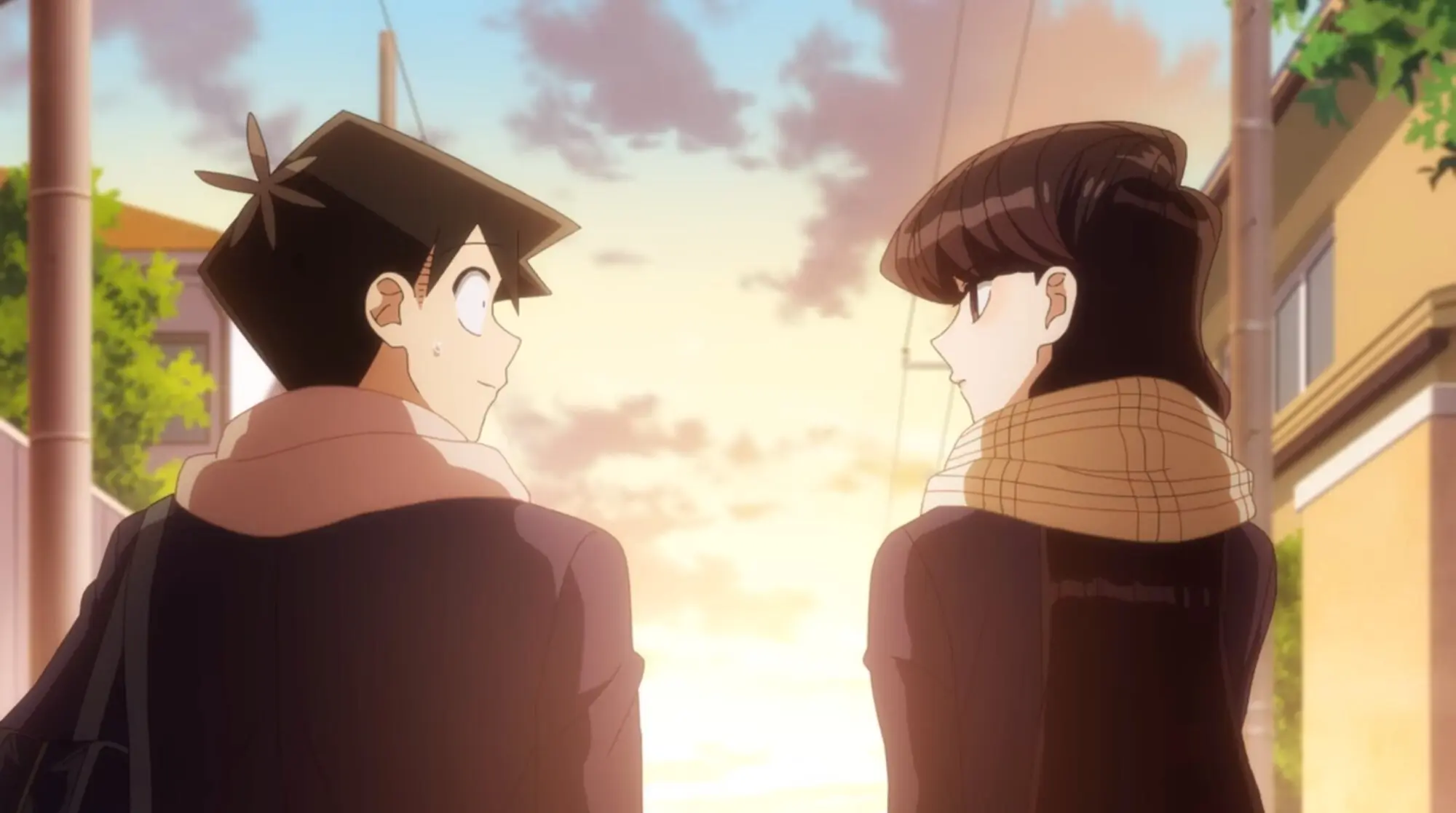
In the fascinating anime Komi Can’t Communicate, we’re introduced to the enigmatic Shouko Komi, whose ethereal beauty and graceful demeanor earn her the title of Madonna at the prestigious Itan Private High School. Despite her popularity, Shouko struggles with a major obstacle: a severe communication disorder that leaves her unable to interact with others effectively.
Enter Hitohito Tadano, a pragmatic young man who prefers to fly under the radar and avoid unnecessary trouble. However, fate has other plans for him when he finds himself seated next to Shouko in class, instantly making him a target for his classmates’ scrutiny and envy.
With its endearing premise and charming characters, Komi Can’t Communicate is a swoon-worthy anime that invites viewers into a world of friendship, empathy, and personal growth. Join Shouko and Hitohito on their touching journey as they defy the odds and discover the power of genuine human connection. This anime is truly a gem worth experiencing.
“Komi Can’t Communicate” (Komi-san wa, Komyushou desu.) is a popular Japanese manga series written and illustrated by Tomohito Oda. Since its serialization in 2016, the series has gained widespread acclaim for its endearing characters, heartfelt storytelling, and unique premise.
The story revolves around Shouko Komi, a high school girl admired by her peers for her beauty and grace. However, despite her outward appearance, Komi suffers from extreme social anxiety that makes it difficult for her to communicate effectively with others. She is unable to speak or express herself comfortably, leading to misunderstandings and isolation.
One day, Tadano Hitohito, an average and perceptive student, discovers Komi’s communication struggles and resolves to help her achieve her goal of making 100 friends. Together, they get on a journey to find social interactions and overcome Komi’s challenges, encountering a diverse cast of characters along the way.
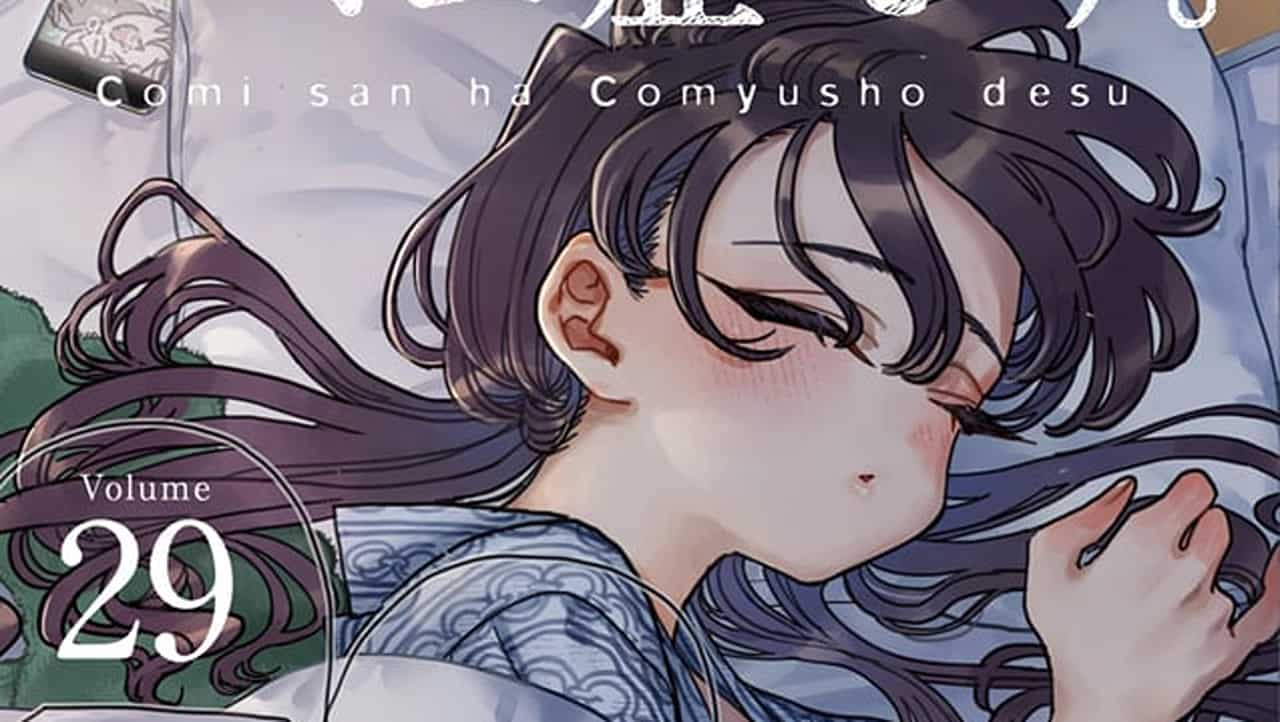
As the story unfolds, readers witness Komi’s gradual growth and development as she learns to open up and connect with others, forming genuine friendships and discovering her own voice.
The main characters include Shouko Komi, a beautiful and reserved girl struggling with severe social anxiety, and Tadano Hitohito, her empathetic classmate who becomes her first friend and ally. Other classmates, such as Najimi Osana, a quirky and determined peer, contribute to Komi’s journey towards overcoming her communication barriers.
“Komi Can’t Communicate” follows themes of friendship, empathy, self-acceptance, and the importance of genuine connections. The series delicately portrays the challenges of social anxiety and the impact of loneliness, while emphasizing the transformative power of friendship and understanding.
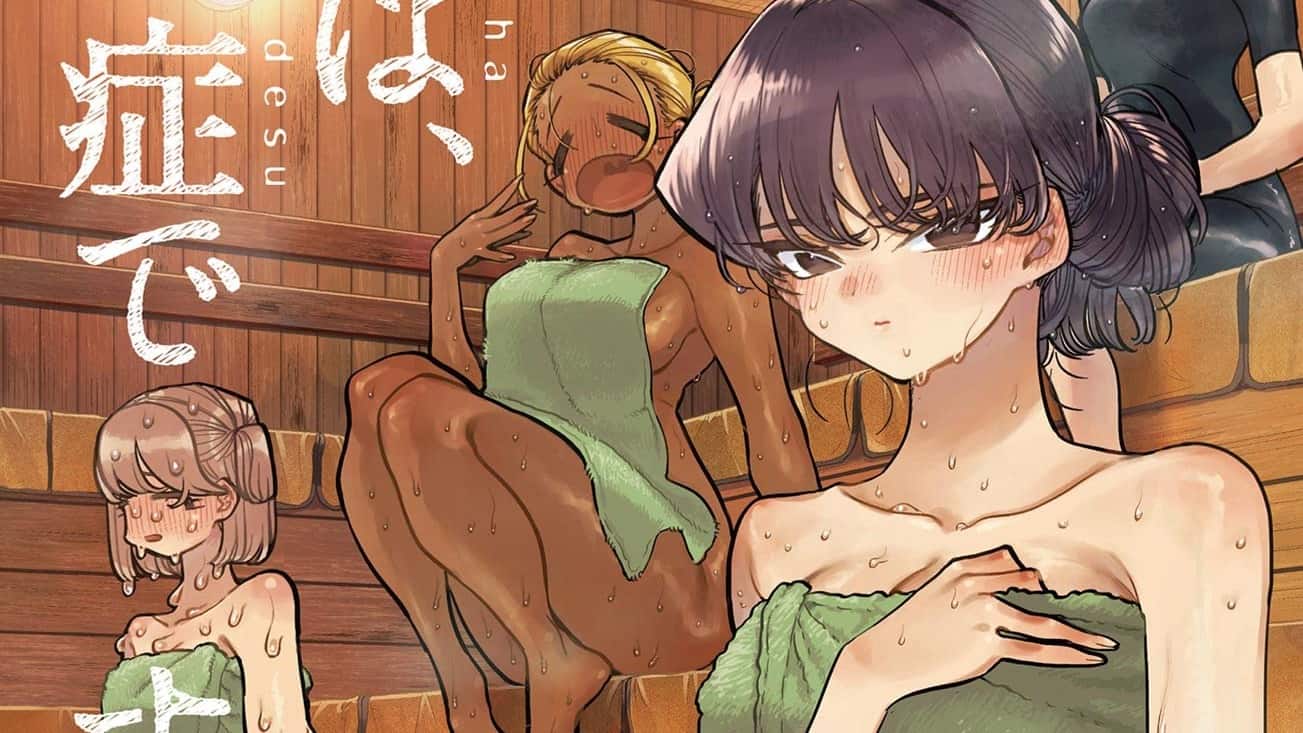
Tomohito Oda’s art style is clean, expressive, and visually appealing. The characters are drawn with distinct designs that complement their personalities, and the artwork effectively conveys the characters’ emotions and interactions.
The manga has received widespread acclaim for its relatable characters, heartfelt storytelling, and thoughtful exploration of social anxiety and friendship. Its positive reception has led to various adaptations, including light novels, a television anime series, and merchandise, further highlighting its universal appeal and resonance with audiences of all ages.
Komi Can’t Communicate is a touching and uplifting manga that beautifully portrays the journey of overcoming social anxiety and finding genuine connections. With its relatable characters, heartfelt storytelling, and charming artwork, the series offers a compelling exploration of friendship, empathy, and self-discovery. Whether you are a fan of slice-of-life or coming-of-age narratives, “Komi Can’t Communicate” is a must-read manga that leaves a lasting impression with its heartfelt message and endearing characters.
4. Rascal Does Not Dream of Bunny Girl Senpai
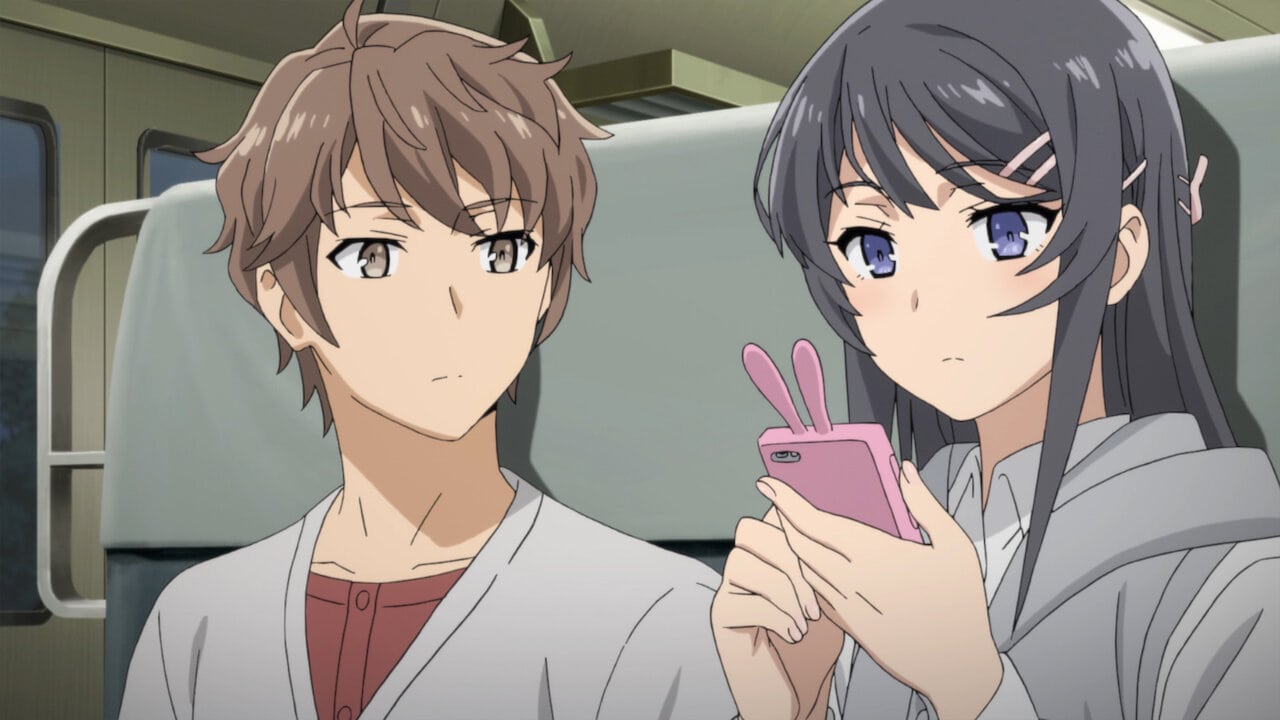
It would be a crime not to include Hajime Kamoshida’s beloved series in the lineup of swoon-worthy anime. This gem of a novel-turned-anime captured the hearts of fans, leaving them eagerly anticipating a second season.
The story unfolds in a world where a mysterious phenomenon known as Puberty Syndrome wreaks havoc among teenagers, manifesting in bizarre and inexplicable ways. Among those familiar with its existence is Sakuta Azusagawa, who looks at the complexities of this unusual disorder within his school.
Enter Mai Sakurajima, a former child actress turned aloof high school senior. Despite her fame, Mai exudes an aura of unapproachability, leaving her isolated from her peers. It’s not until Sakuta crosses paths with her in the library, clad in a bunny girl costume, that their fateful encounter unfolds.
Amidst the trials and tribulations, the bond between Mai and Sakuta blossoms into a fascinating romance, earning them a well-deserved place as one of anime’s most swoon-worthy couples. With its intriguing premise and endearing characters, Rascal Does Not Dream of Bunny Girl Senpai is a must-watch for anyone craving a blend of romance, mystery, and heartwarming moments. Join Mai and Sakuta on their unforgettable journey as they look at the complexities of adolescence and love in this fascinating anime series.
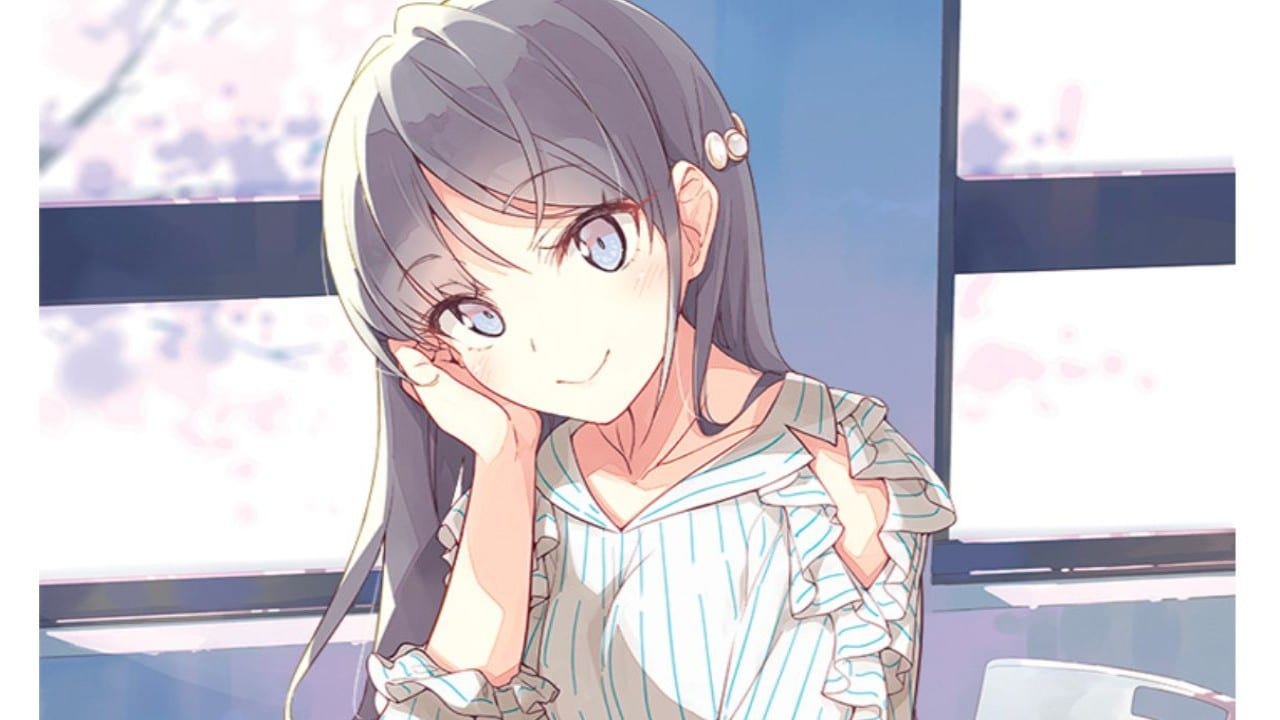
“Rascal Does Not Dream of Bunny Girl Senpai” (Seishun Buta Yarou wa Bunny Girl Senpai no Yume wo Minai) is a Japanese light novel series by Hajime Kamoshida, later adapted into an anime that garnered significant popularity.
The story revolves around Sakuta Azusagawa, a high school student who encounters supernatural phenomena related to “puberty syndrome.” He meets Mai Sakurajima, a former child actress who inexplicably becomes invisible to most people but remains visible to Sakuta. Their investigation into Mai’s situation leads them to uncover the complexities of puberty syndrome and help others affected by it.
The characters are a key highlight of the series. Sakuta Azusagawa, though initially portrayed as blunt and sarcastic, harbors a caring nature and is driven by empathy to assist those around him. His relationship with Mai Sakurajima evolves from curiosity to a deep emotional connection, exploring themes of identity and fame.
Mai Sakurajima’s decision to wear a bunny girl costume in public serves as a metaphor for her desire to break free from societal expectations and regain visibility in her own life. Her struggles with isolation and the pressures of fame are portrayed with depth and sensitivity.
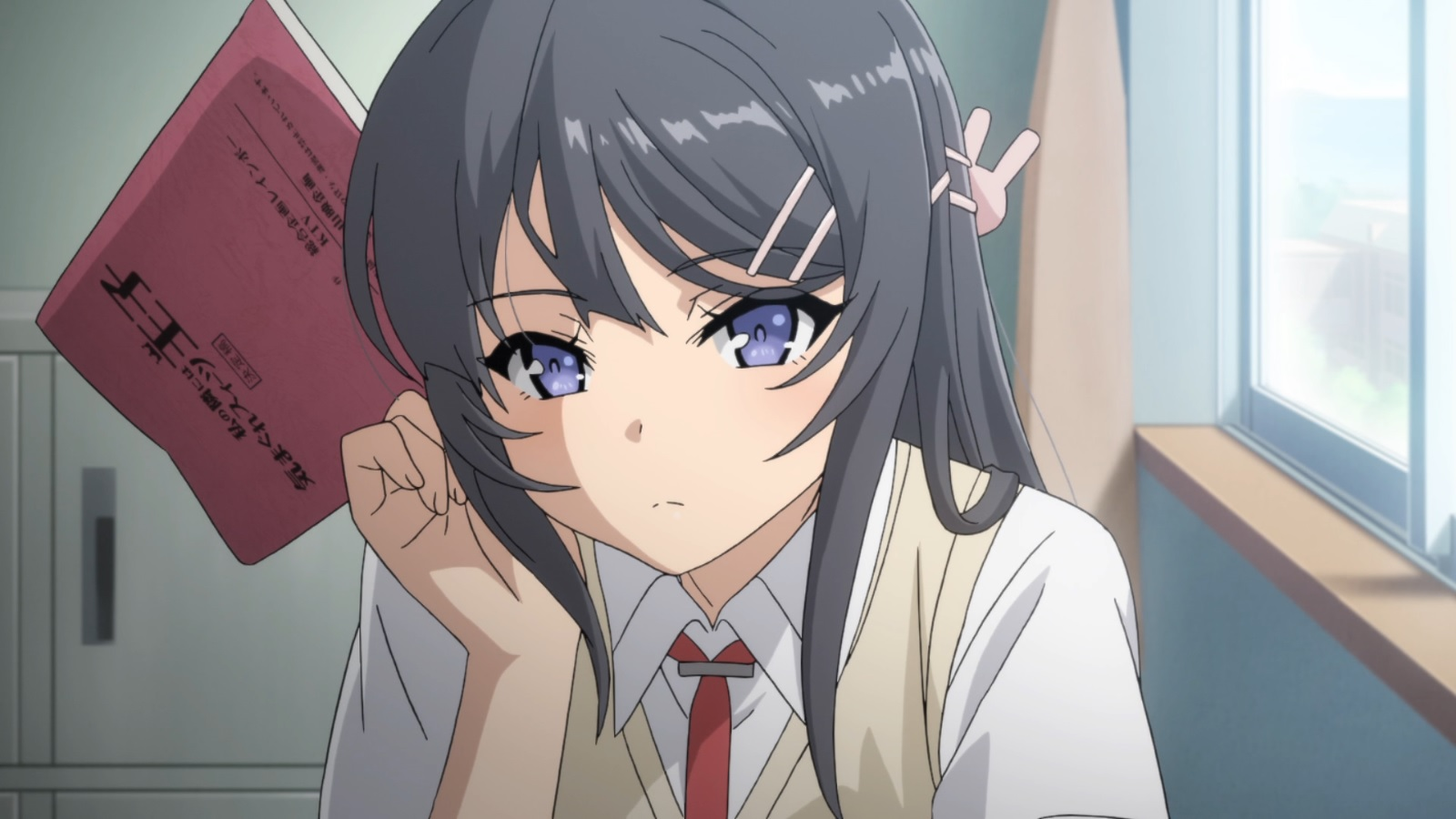
Supporting characters like Kaede Azusagawa, Sakuta’s younger sister who experiences memory loss due to puberty syndrome, add emotional depth to the narrative. Tomoe Koga and Rio Futaba contribute to the exploration of puberty syndrome through scientific investigation, enriching the thematic exploration of adolescence and identity.
Throughout the series, themes of loneliness, social withdrawal, self-worth, and the desire for connection are follow through the lens of supernatural phenomena. Each story arc introduces a new character grappling with a different manifestation of puberty syndrome, providing poignant reflections on the challenges faced by young people.
Symbolism plays a significant role, with Mai’s bunny girl costume symbolizing her struggle for visibility and Kaede’s memory loss representing the impact of trauma on personal identity.
The anime adaptation of “Bunny Girl Senpai” by CloverWorks is visually striking, with fluid animation and a nice soundtrack by Fox Capture Plan. The series has made a lasting impact on the anime community, sparking discussions on mental health, adolescence, and societal expectations.
Rascal Does Not Dream of Bunny Girl Senpai is a compelling anime that transcends its supernatural premise to deliver a heartfelt exploration of youth, identity, and human connection. Its well-developed characters, thematic depth, and artistic execution make it a standout title in the genre of character-driven dramas.
3. Fireworks
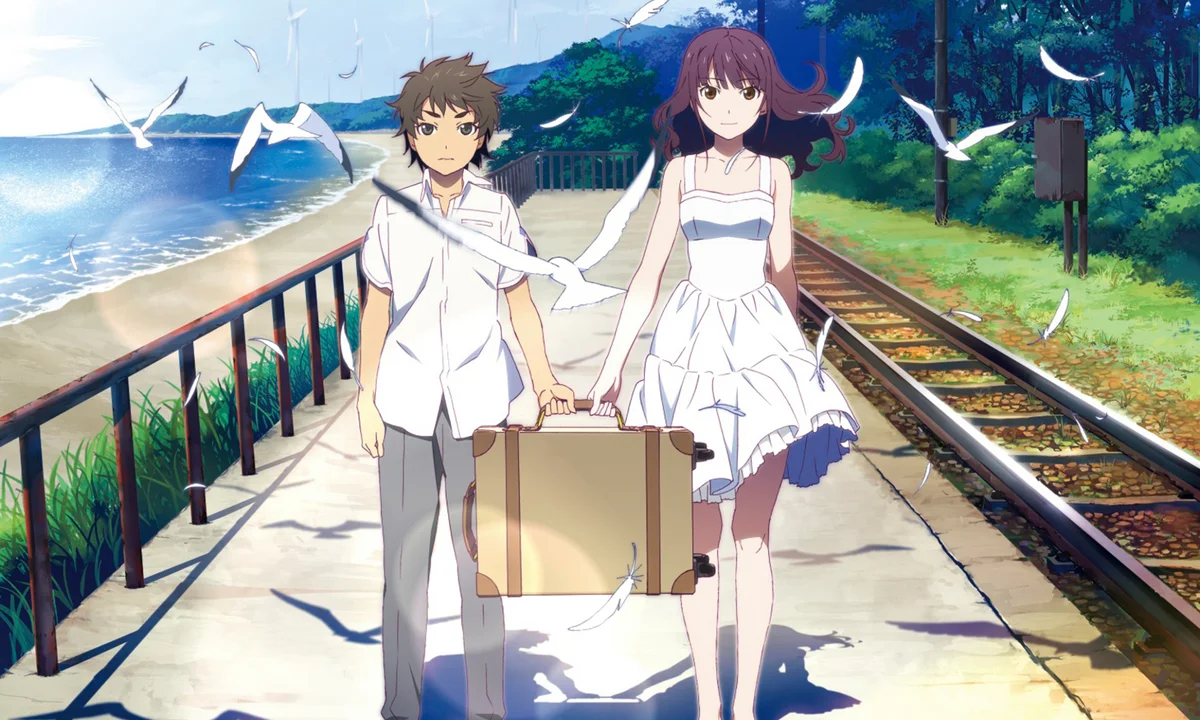
In the fascinating anime film Fireworks, viewers are drawn into a tale of teenage romance with a mesmerizing twist. High schooler Norimichi Shimada finds himself caught in a love triangle with his classmate Nazuna Oikawa, with both he and his friend Yusuke Azumi harboring feelings for her.
As tensions rise in the classroom, the trio’s dynamic takes a dramatic turn during a swim race. Nazuna emerges victorious, prompting her to extend an invitation to Yusuke to watch fireworks together that night. However, Yusuke disappoints her by backing out, leaving Nazuna longing for Norimichi’s company instead.
But fate intervenes when Nazuna discovers a peculiar marble, sparking an unexpected turn of events. Showing it to Norimichi, he impulsively throws it into the water, expressing his wish to have won the race instead. To their astonishment, time reverses, granting Norimichi a second chance to seize victory.
With newfound determination, Norimichi triumphs in the race, setting off a chain of events that in ways they could never have imagined. As the story unfolds, viewers are swept up in a whirlwind of emotions, from heartwarming moments of romance to heartbreaking twists of fate.
Fireworks (also known as “Fireworks, Should We See It from the Side or the Bottom?”) is a manga series written by Iwai Shunji and illustrated by Makoto Fuugetsu. It is based on the 1993 Japanese live-action film of the same name, which was directed by Shunji Iwai. The manga adaptation provides a different perspective on the original story, focusing more on the characters’ emotions and relationships.
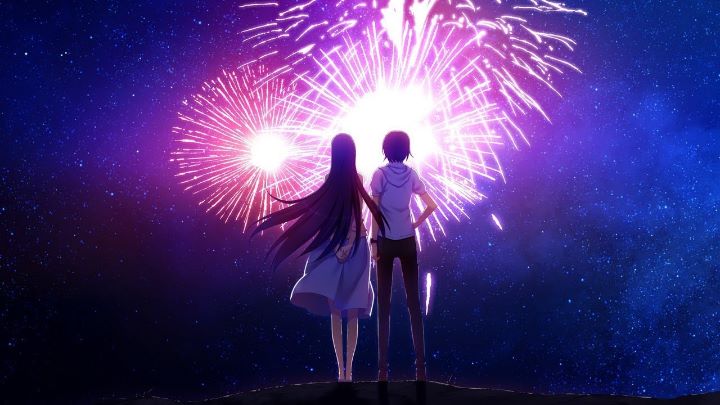
The story revolves around a group of teenage friends who become embroiled in a mysterious phenomenon involving fireworks. Nazuna, a quiet and enigmatic girl, is planning to run away from home with her boyfriend Norimichi. However, Norimichi and his friends discover that they have the ability to manipulate time through a strange phenomenon involving fireworks.
As Norimichi and his friends find the complexities of adolescence, friendships, and unrequited feelings, they grapple with the implications of altering time and the consequences of their decisions. The manga goes into themes of regret, longing, and the transient nature of youth.
Makoto Fuugetsu’s artwork in the “Fireworks” manga is notable for its expressive character designs and emotive illustrations. The use of shading and panel layouts enhances the emotional depth of the story, capturing the nuances of the characters’ interactions and inner turmoil.
The manga follows several themes common in coming-of-age narratives, such as youthful idealism, first love, and the desire for freedom. The motif of fireworks serves as a symbol of fleeting moments and the transient nature of time, reflecting the characters’ emotional journeys and the bittersweetness of adolescence.

The “Fireworks” manga adaptation offers a fresh take on the original film, providing deeper insights into the characters’ motivations and inner conflicts. While the manga retains the core elements of the film’s plot, it expands on certain aspects, allowing for a more introspective exploration of the characters’ psyches.
In terms of reception, the “Fireworks” manga has been well-received by fans of the original film and readers of romantic dramas. It effectively captures the nostalgia and melancholy associated with adolescence while offering a unique interpretation of the story through the lens of manga storytelling.
Fireworks” is an amazing manga adaptation that goes into themes of youth, love, and the passage of time. With its emotive artwork and character-driven narrative, the manga provides a poignant exploration of adolescent emotions and relationships. Fans of romantic dramas and coming-of-age stories will find “Fireworks” to be a compelling and heartfelt read.
2. Fruits Basket
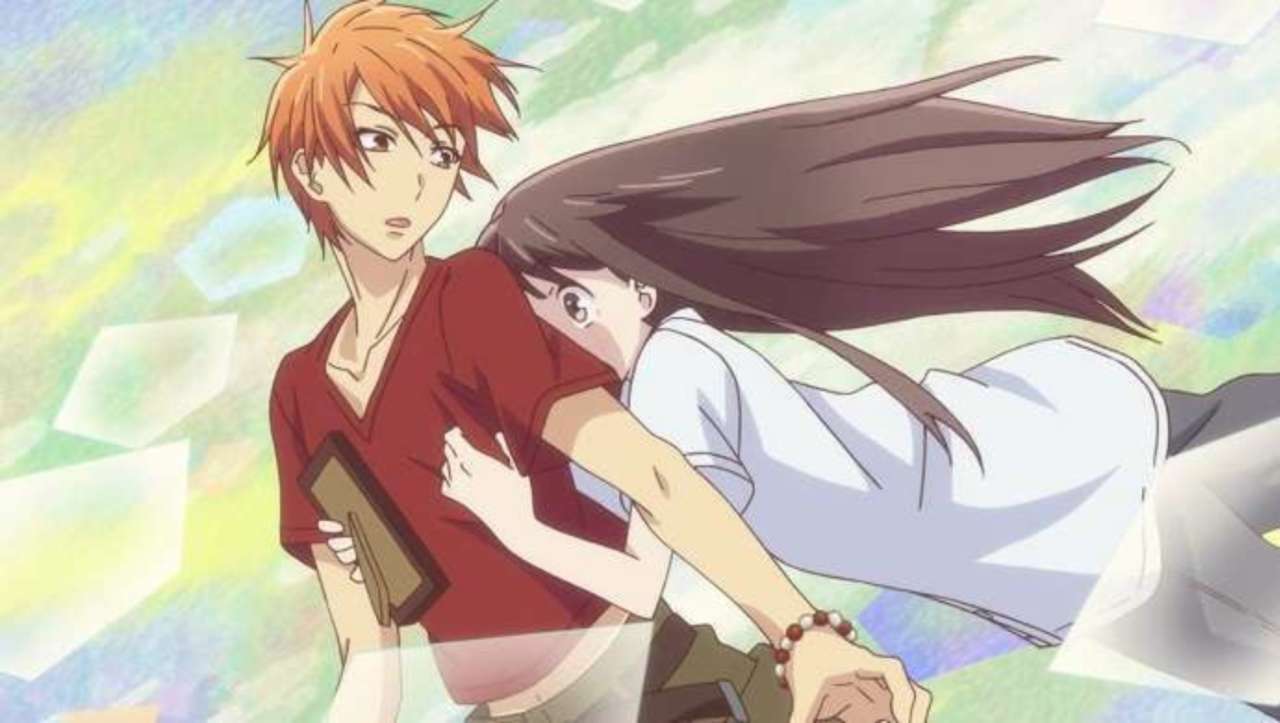
In the swoon-worthy anime, Fruits Basket stands out as a fascinating and unconventional gem that has captured the hearts of fans since its inception. Originally introduced through the manga in 1998 and later adapted into an anime series in 2001, Fruits Basket offers a refreshing twist on the traditional romance genre.
At the center of the story is 16-year-old Tohru Honda, whose life takes a tumultuous turn following a tragic family loss. Determined to forge her own path, Tohru decides to leave her old life behind and sets up camp in a tent. Little does she know, her makeshift home sits on private land owned by the enigmatic Soma clan.
With its compelling characters, heartfelt storytelling, and sprinkling of magical realism, Fruits Basket offers a poignant and unforgettable viewing experience that transcends the boundaries of traditional romance. Join Tohru and the Soma family on their extraordinary journey as they look the joys and challenges of life, love, and self-discovery in this truly swoon-worthy anime series.
“Fruits Basket” (often abbreviated as “Furuba”) is a beloved Japanese manga series written and illustrated by Natsuki Takaya. It was serialized from 1998 to 2006 in the magazine Hana to Yume and later collected into 23 volumes. The series gained immense popularity and was adapted into multiple anime series, including a recent reboot that closely follows the manga’s storyline.
The story follows Tohru Honda, a high school girl who, after tragically losing her mother, ends up living in a tent in the woods. She is discovered by the enigmatic Soma family, who offer her a place to stay in their home.
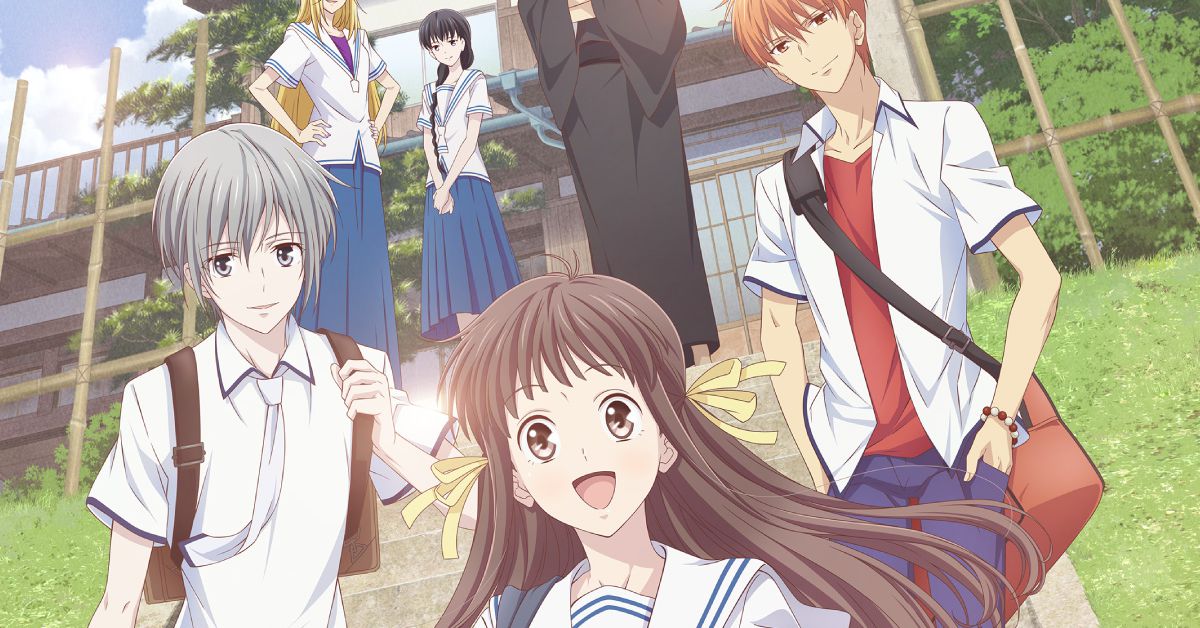
Tohru soon learns that the Somas have a secret: they are cursed by the Chinese zodiac animals. Twelve members of the family are possessed by the spirits of the zodiac, and they transform into their respective animals when hugged by someone of the opposite gender.
As Tohru becomes entwined with the lives of the Somas, she discovers their deep-rooted family secrets and learns about the pain and emotional scars each member carries due to the curse. Despite the challenges, Tohru’s kindness and empathy gradually bring healing to the fractured Soma family.
“Fruits Basket” follows the themes of acceptance, family dynamics, emotional healing, and the impact of trauma on individuals. The curse serves as a metaphor for the character’s internal struggles and emotional barriers, highlighting the importance of empathy and understanding in overcoming personal obstacles.
The series also goes into the concept of self-identity and the journey of self-acceptance. Many characters grapple with their own sense of worth and purpose, and Tohru’s influence often helps them confront their insecurities and forge meaningful connections.
In addition to the original manga, “Fruits Basket” received an anime adaptation in 2001, which followed the manga’s storyline but diverged towards the later arcs. In 2019, a new anime adaptation titled “Fruits Basket: The Final” was produced, faithfully adapting the entire manga series. The reboot has been praised for its faithfulness to the source material and emotional impact.
Fruits Basket has garnered widespread acclaim for its deep characters, poignant storytelling, and heartfelt exploration of human emotions. It continues to resonate with audiences worldwide, earning its place as a classic in the genre of supernatural romance and slice-of-life manga.
1. I’m in Love with the Villaniess
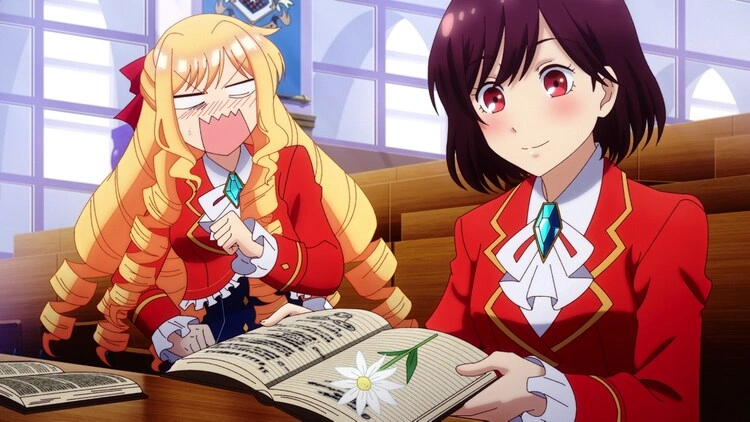
Step into the enchanting world of I’m in Love with the Villainess, where reality and fantasy blur in this swoon-worthy anime tale. Meet Rei Oohashi, a weary office worker who finds solace in the virtual of her favorite otome game, Revolution. By night, she transforms into the charming heroine Rae Taylor, looking at the romantic intrigues of Bauer Kingdom’s Royal Academy.
But unlike typical players who pursue the game’s male love interests, Rei finds herself fascinated by the game’s villainess, Claire Francois. Obsessed with Claire’s allure and complexity, Rei pours her heart and soul into winning over this virtual antagonist.
However, fate takes a dramatic turn when Rei’s exhaustion reaches its breaking point, leading to her untimely passing. To her astonishment, Rei awakens in the Revolution as Rae Taylor, greeted by none other than her beloved Claire.
I’m in Love with the Villainesst is a spellbinding anime that transcends the boundaries of reality, inviting viewers on a journey of love, self-discovery, and the power of unwavering devotion. Join Rae as she look the twists and turns of the Revolution, forging a path to romance that defies all expectations and captures the hearts of viewers around the world.
“I’m in Love with the Villainess” (Watashi no Oshi wa Akuyaku Reijou.) is a Japanese light novel series written by Inori and illustrated by Hanagata. The story falls into the genre of isekai (another world) and yuri (romance between female characters). It gained popularity and was adapted into a manga and later an anime series. Here’s a detailed review and information about this nice series:
The story follows a young woman named Rei Taylor who dies and is reincarnated into the world of an otome game she used to play. In this game world, she wakes up as the antagonist, Claire Francois, the daughter of a noble family destined for a tragic end. Realizing her fate, Rei decides to change her role and avoid the path of destruction set for Claire.
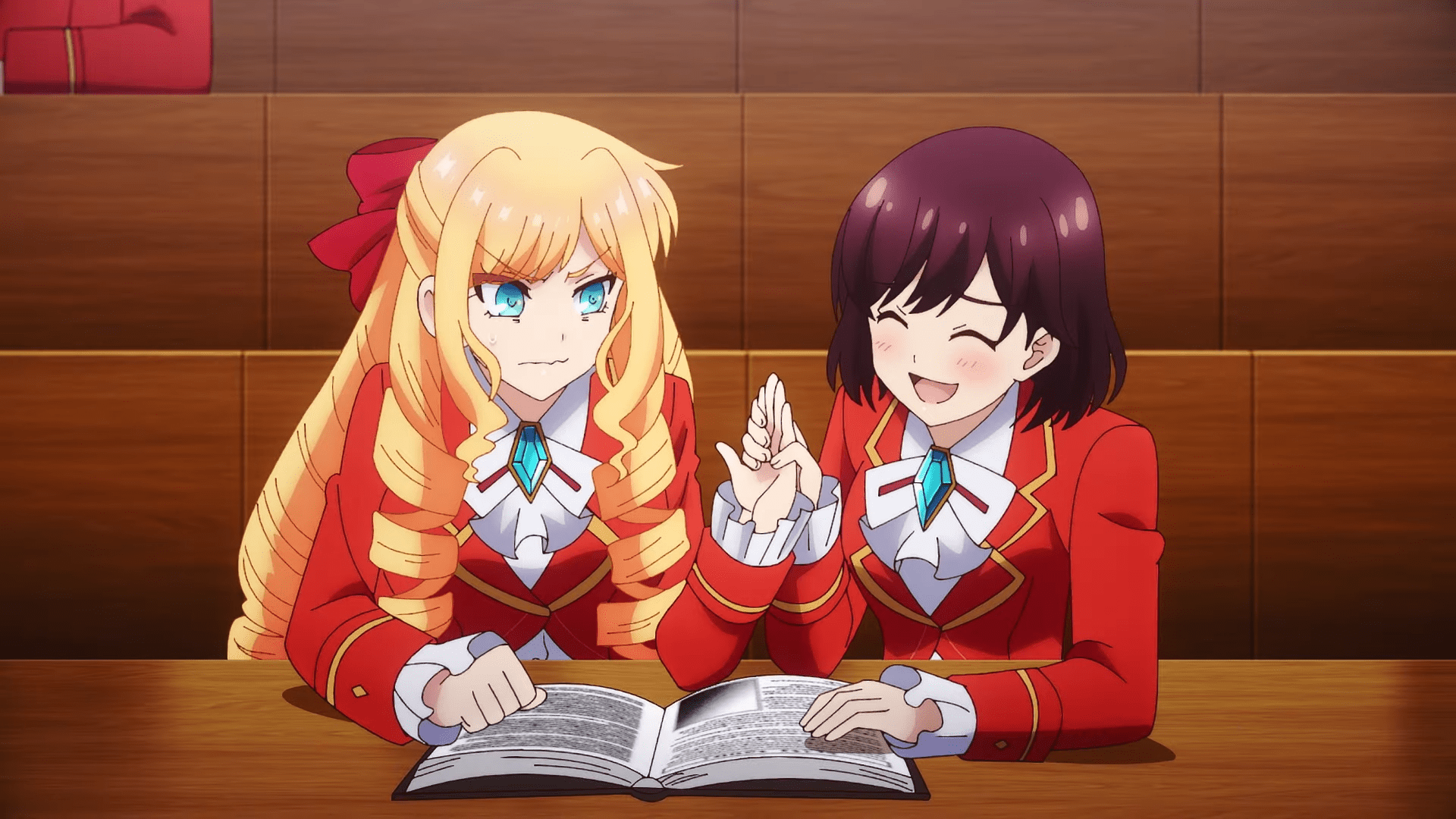
Rei’s plan involves befriending the game’s protagonist, Celia, and forming a romantic relationship with her instead of becoming her enemy. As Rei interacts with various characters and find the game’s world, she discovers unexpected friendships and love interests, all while challenging the predetermined storyline.
“I’m in Love with the Villainess” excels in character development, particularly with Rei’s growth and relationships. Rei’s determination to rewrite her fate drives her to follow her feelings and desires, leading to personal revelations and emotional depth. The interactions between Rei, Celia, and other characters are nuanced and contribute to the story’s richness.
The series follows the themes of self-discovery, redemption, and the fluidity of identity. Rei’s journey to defy her role as a villainess and find happiness challenges societal expectations and conventions within the game world. The story also highlights the importance of genuine connections and understanding beyond superficial appearances.
A notable aspect of “I’m in Love with the Villainess” is its focus on LGBTQ+ romance, specifically the relationship between Rei and Celia. The series handles their romantic development with care and authenticity, portraying their feelings with depth and sincerity. The representation of queer characters in a fantasy setting adds a refreshing dimension to the story.
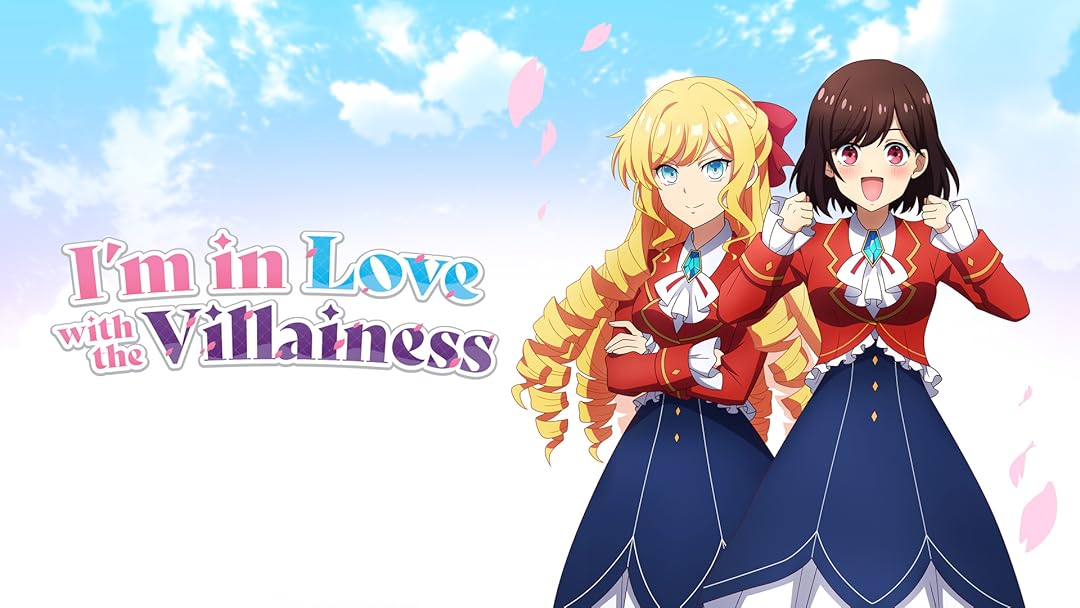
The manga adaptation of “I’m in Love with the Villainess” features expressive artwork that brings the characters and settings to life. The illustrations effectively convey the emotions and dynamics between the characters, enhancing the storytelling experience. The anime adaptation further expands the visual world of the light novel, offering fans a new way to immerse themselves in Rei’s story.
The series has received positive feedback from readers and viewers for its engaging premise, compelling characters, and inclusive themes. It has resonated with fans of isekai, yuri, and romance genres alike, attracting a dedicated following. The success of “I’m in Love with the Villainess” underscores the growing demand for diverse and nuanced narratives within anime and light novels.
“I’m in Love with the Villainess” is a nice series that deftly combines fantasy, romance, and character-driven storytelling. Through Rei’s journey of self-discovery and redemption, the series challenges conventions and celebrates the power of love and authenticity. Whether you’re drawn to its unique premise or heartfelt romance, this series offers a delightful exploration of identity and relationships within a compelling game world.

